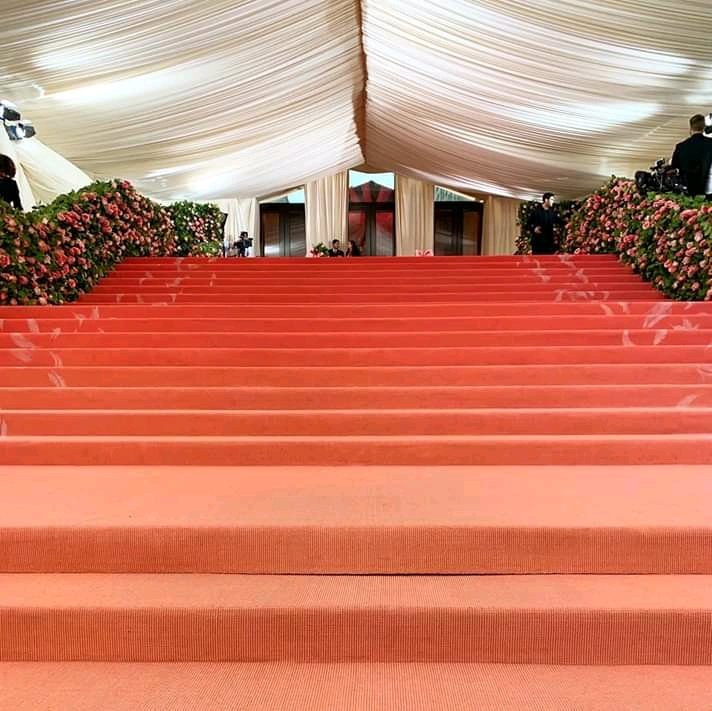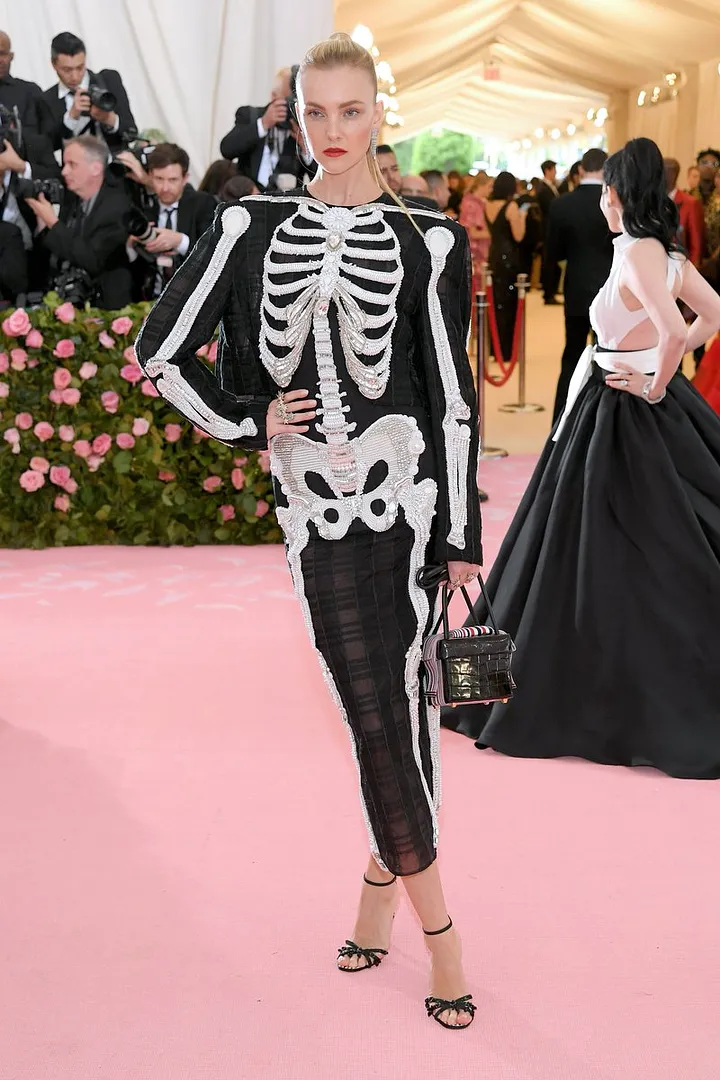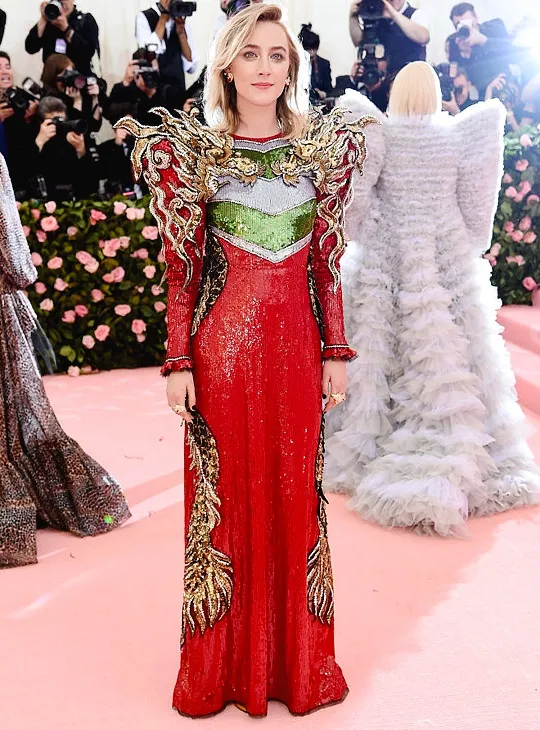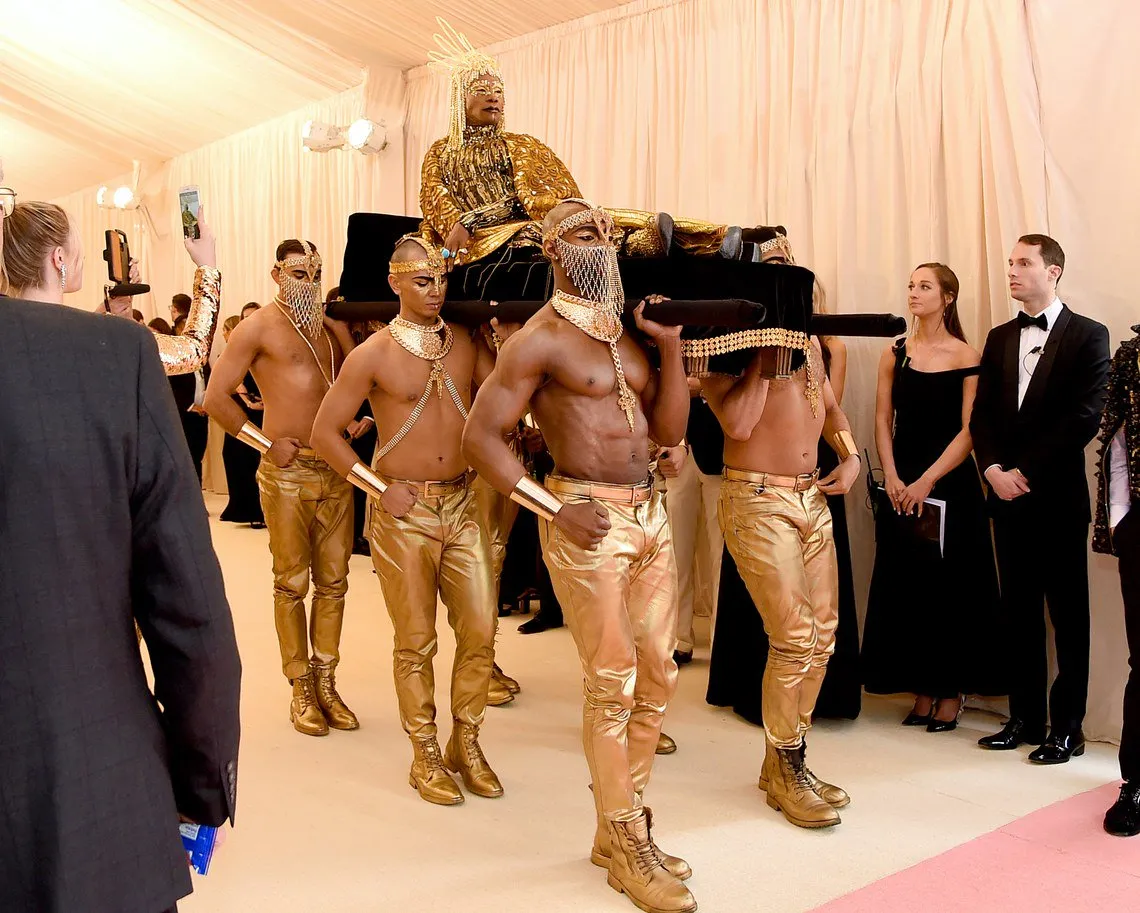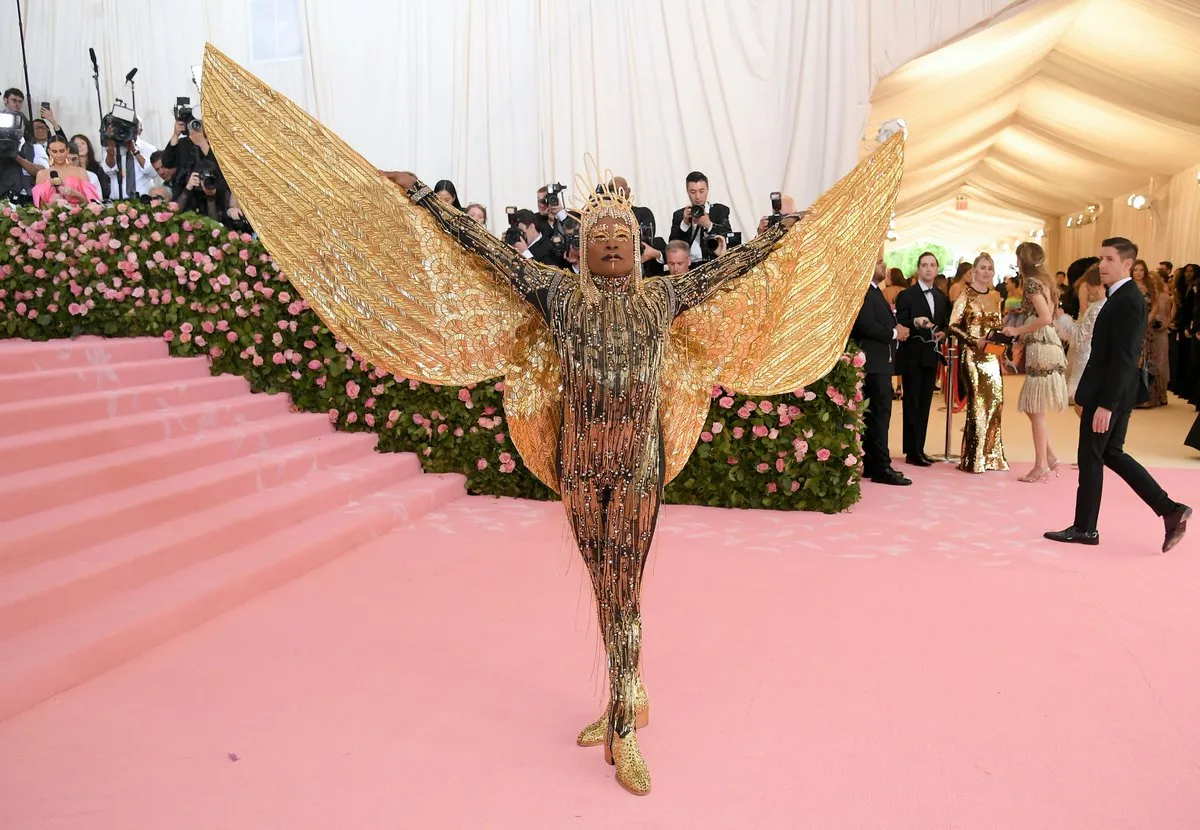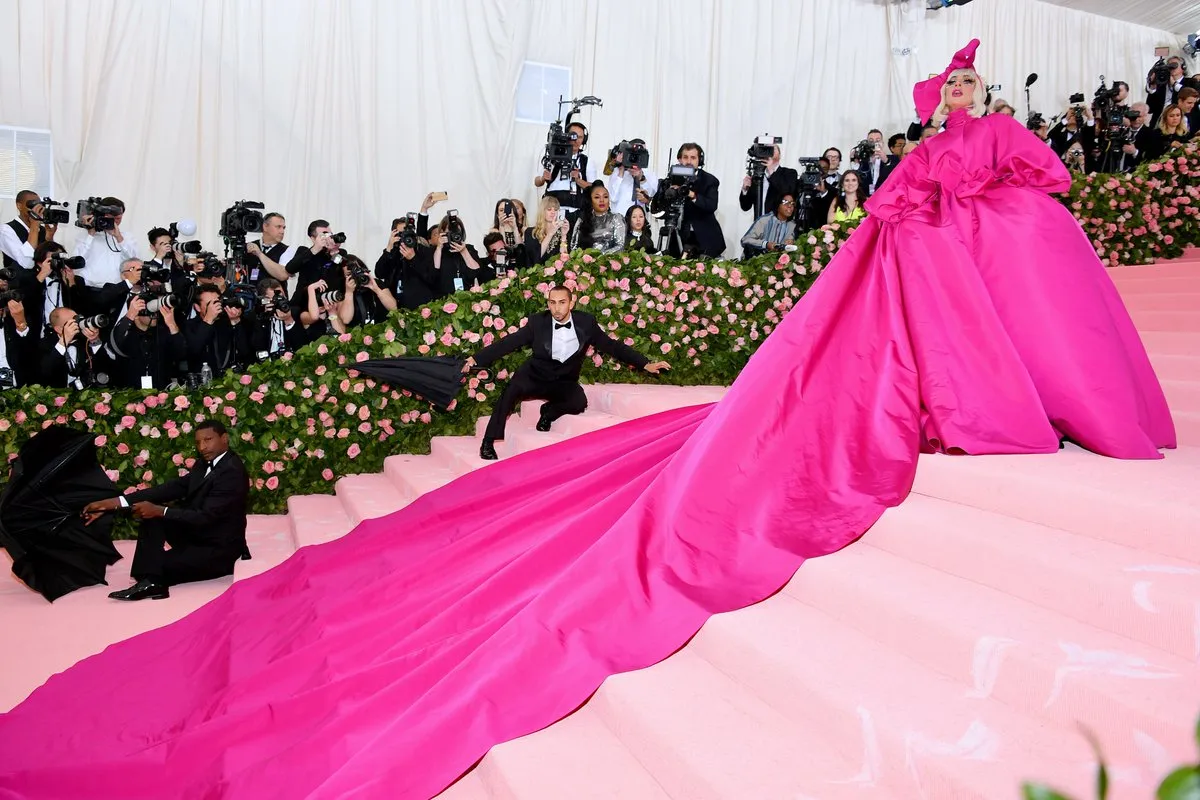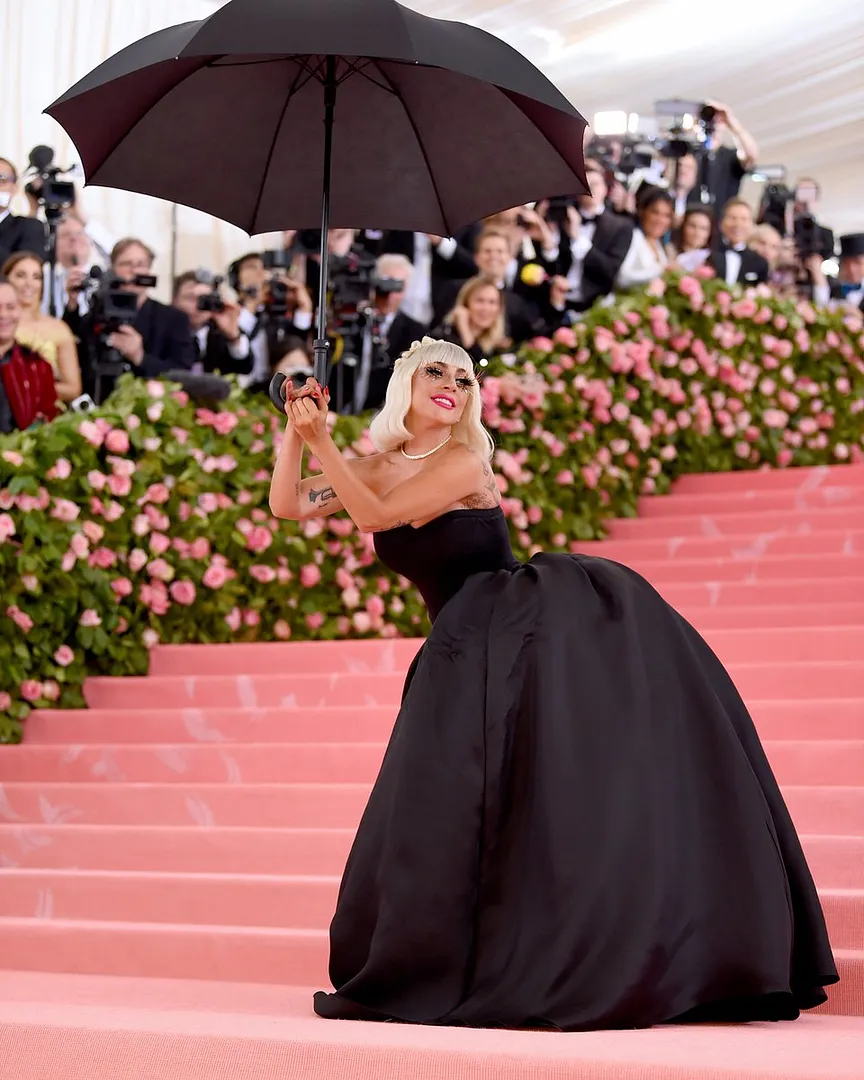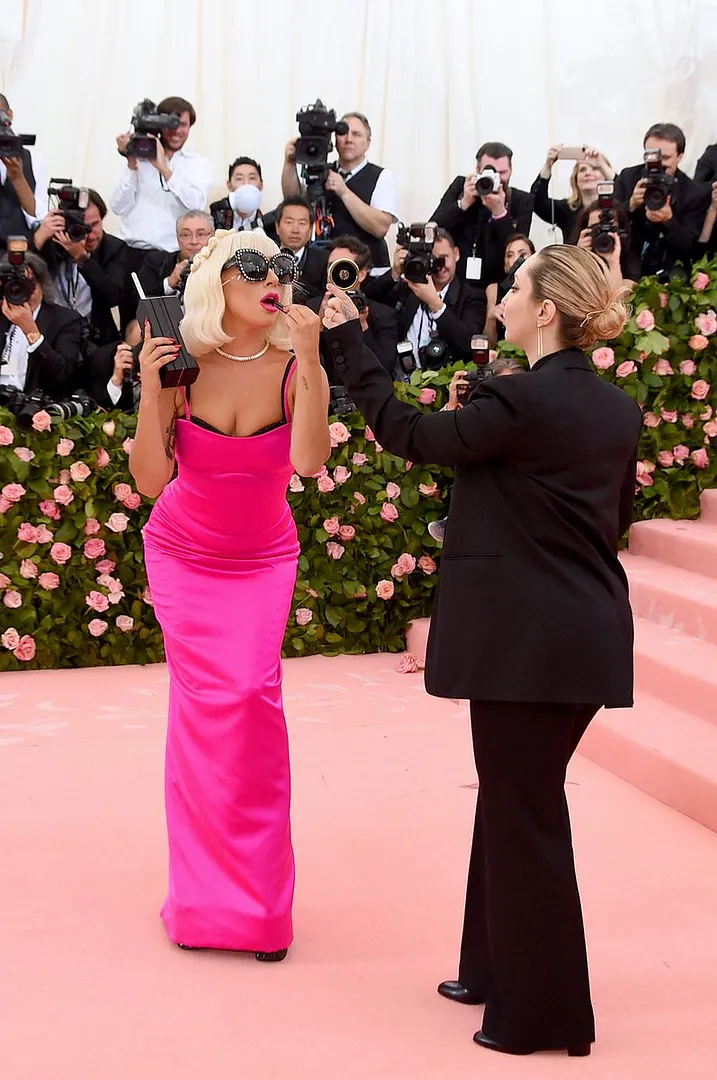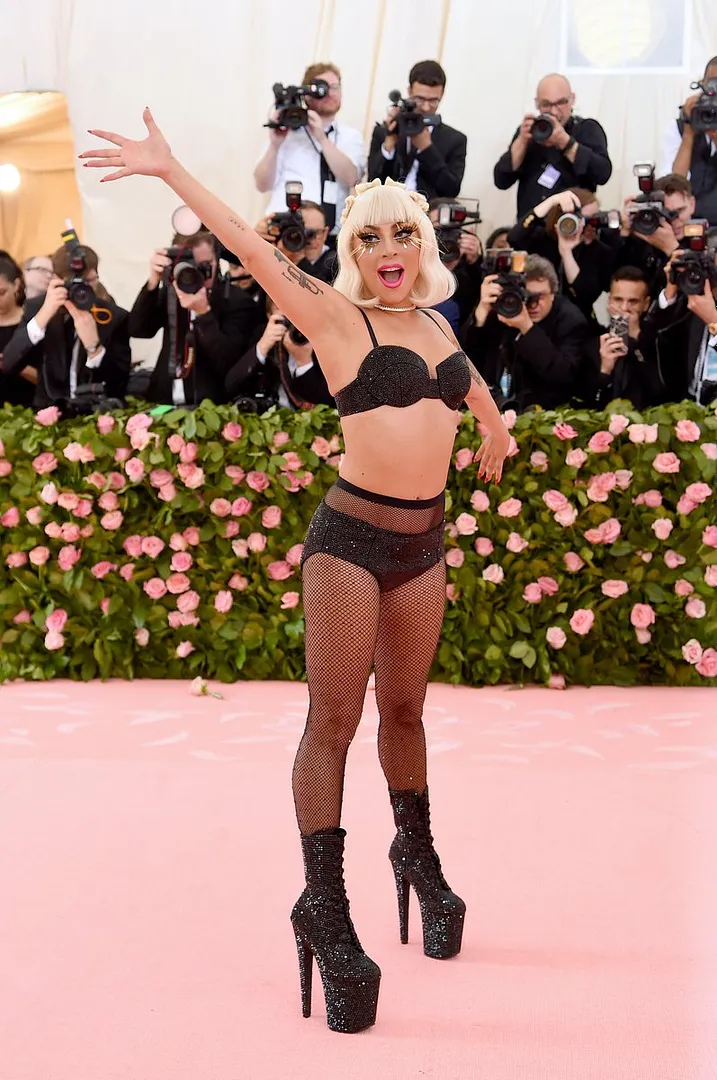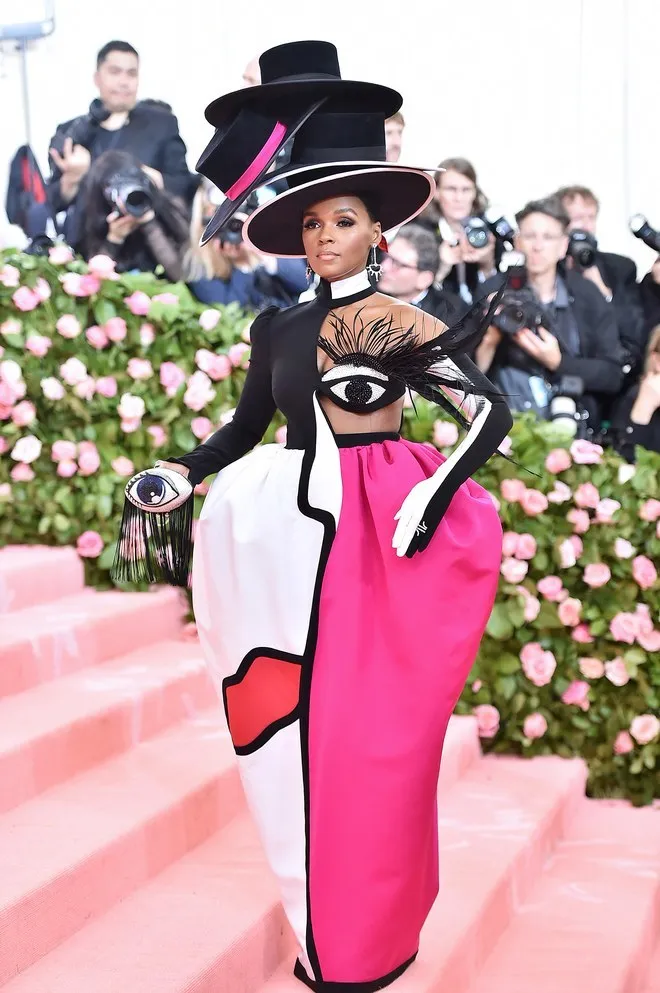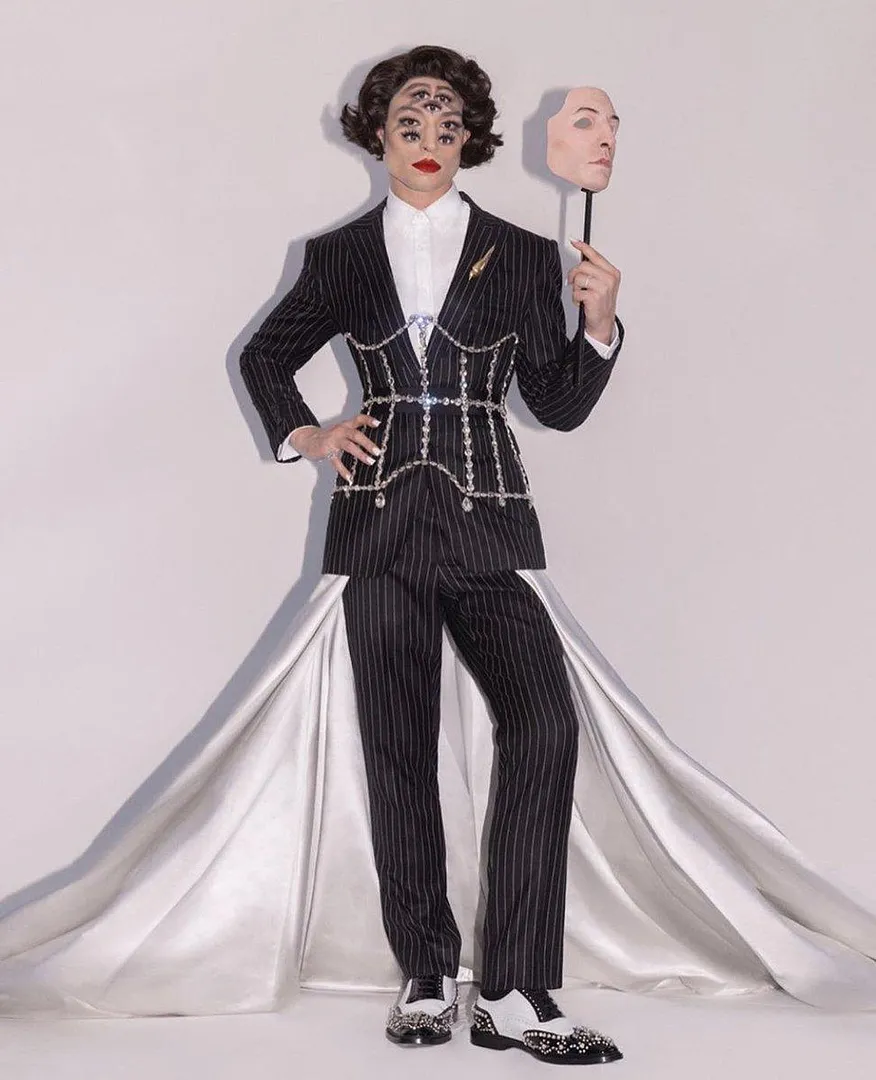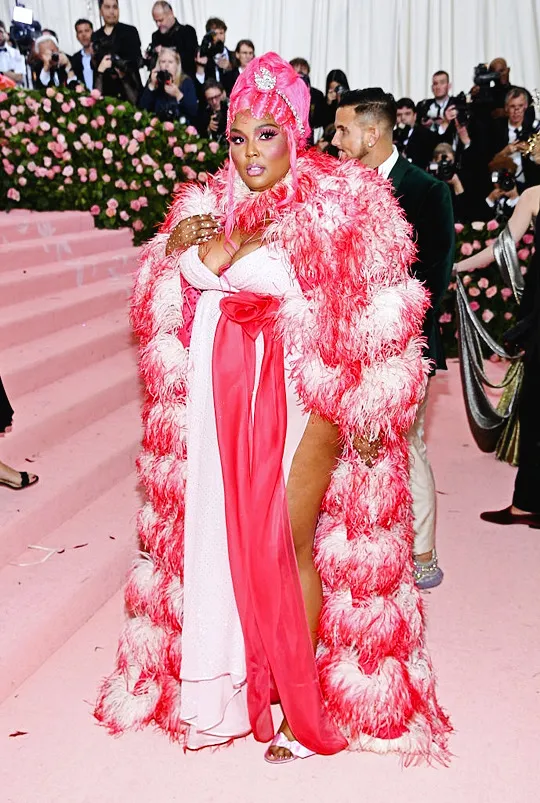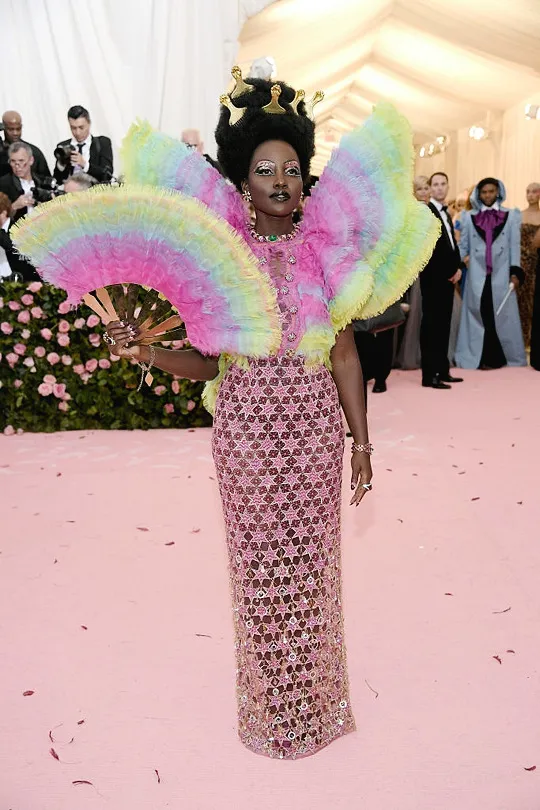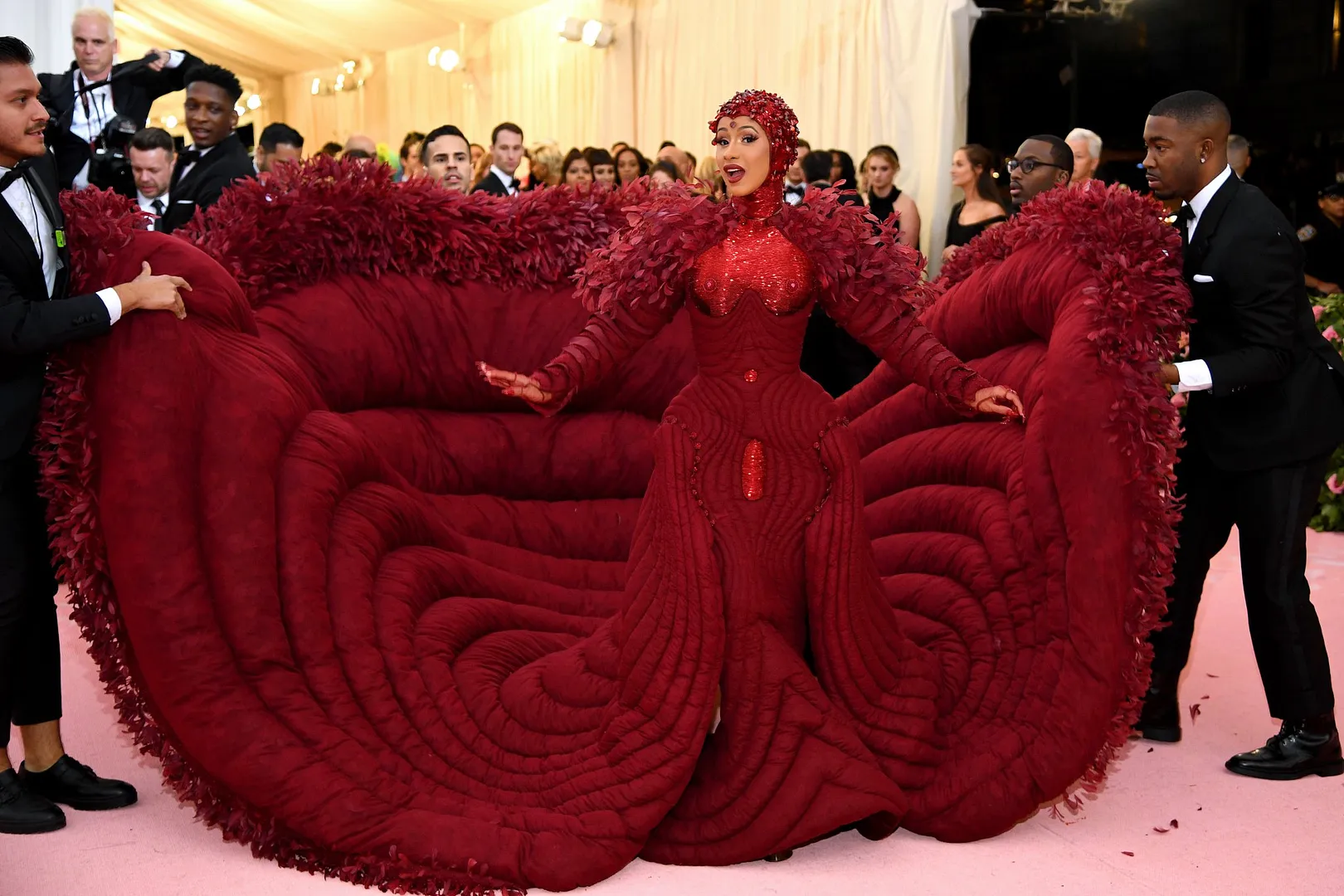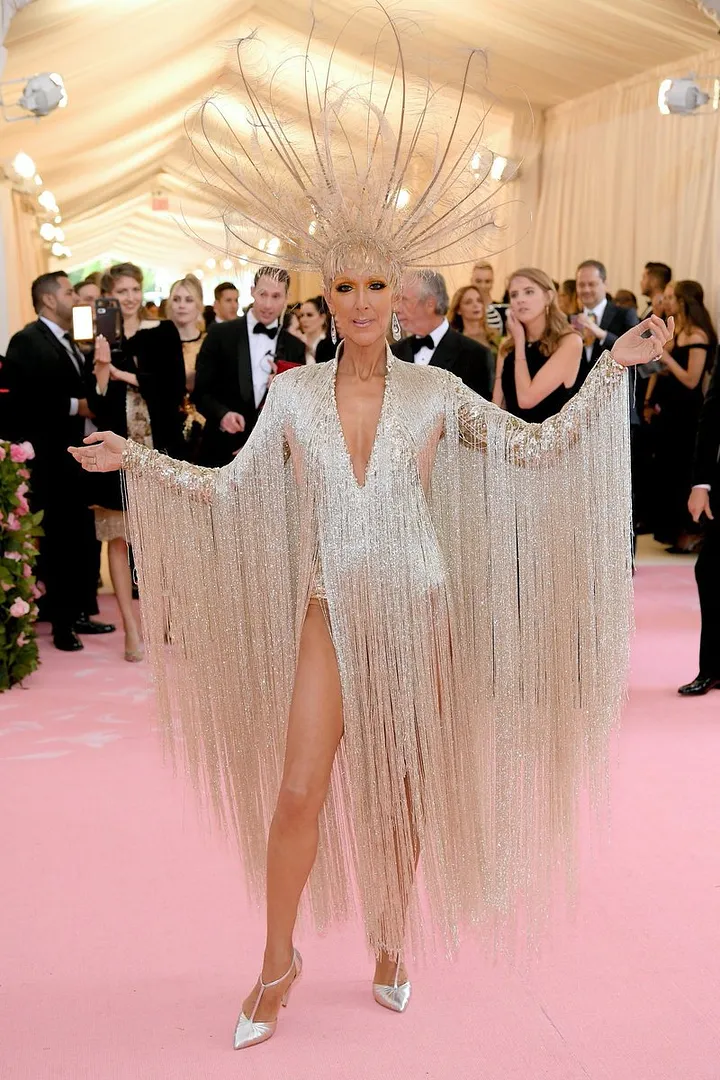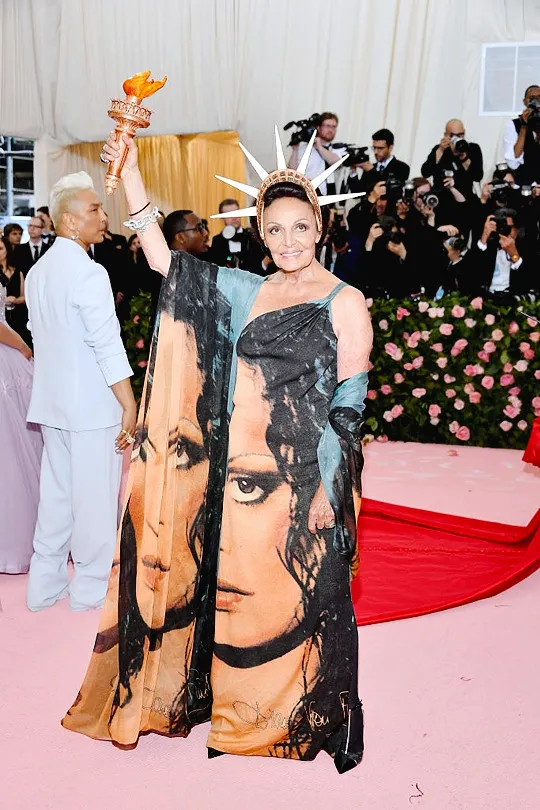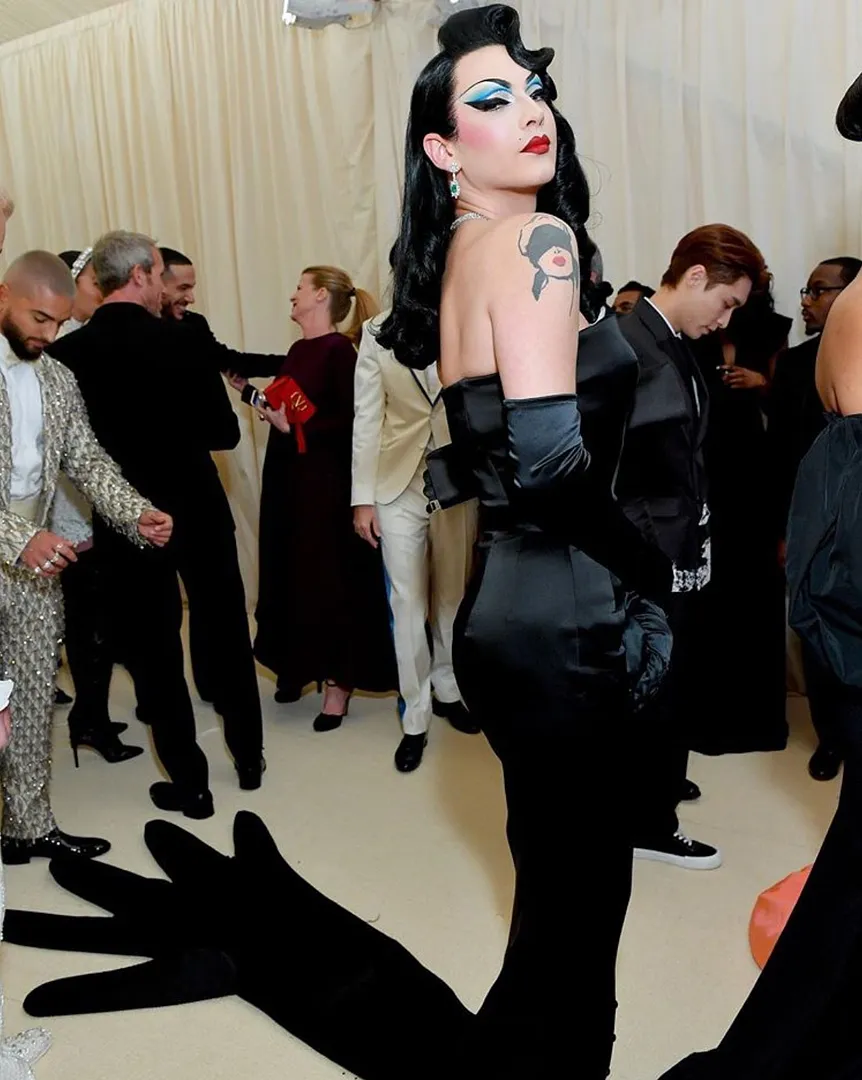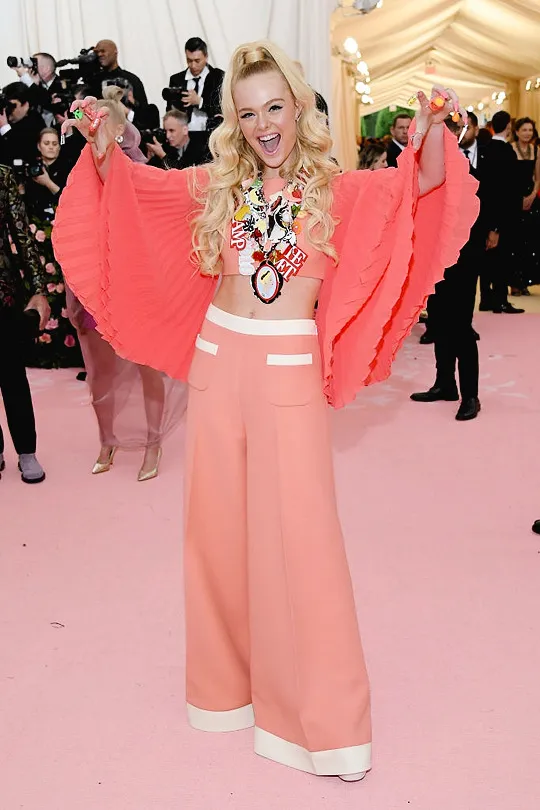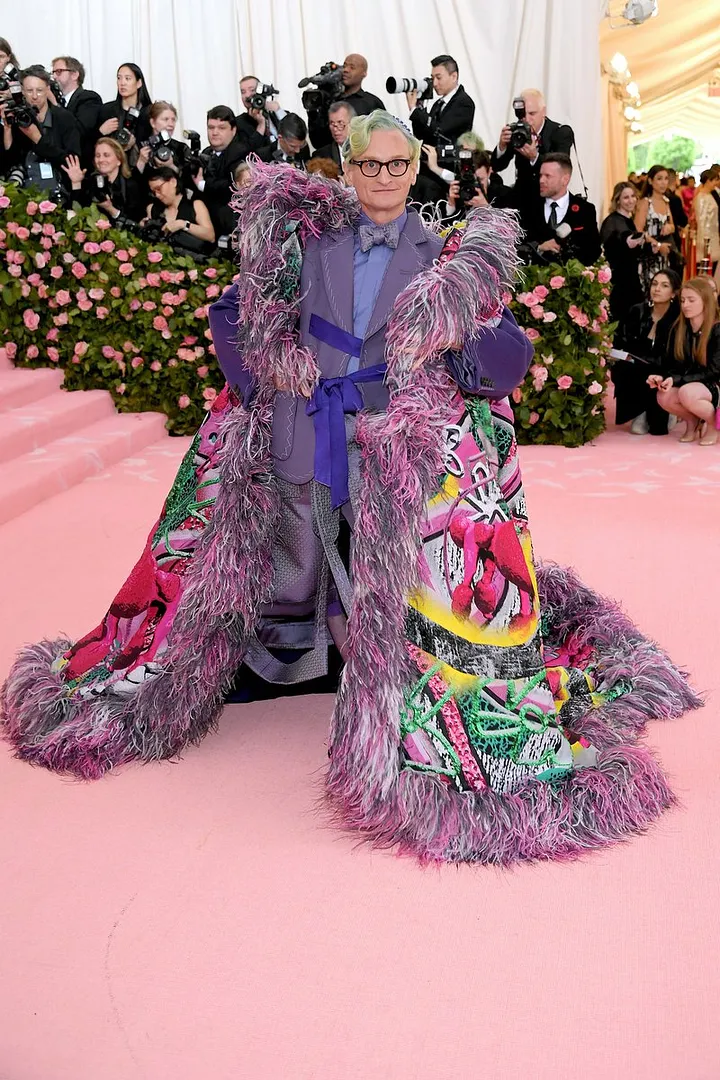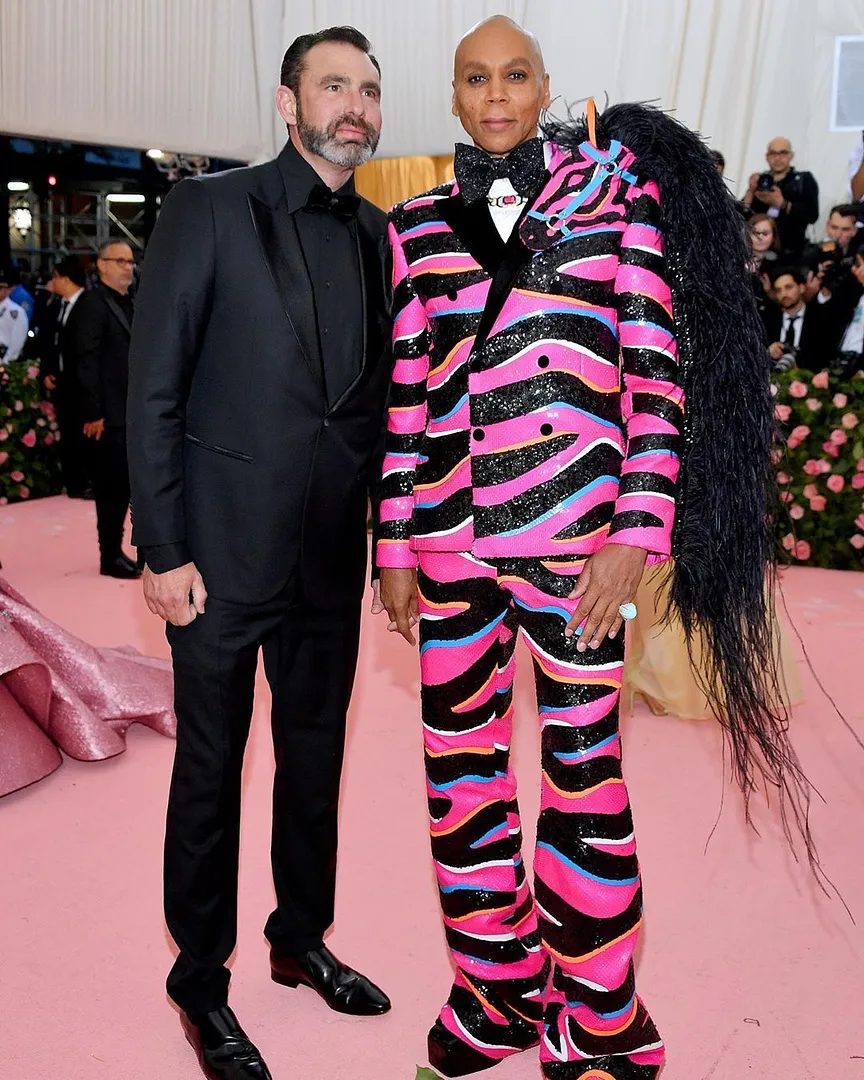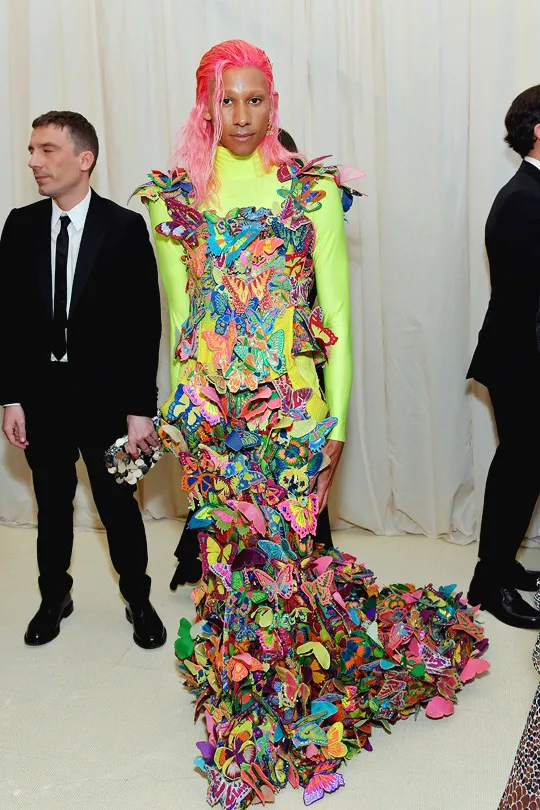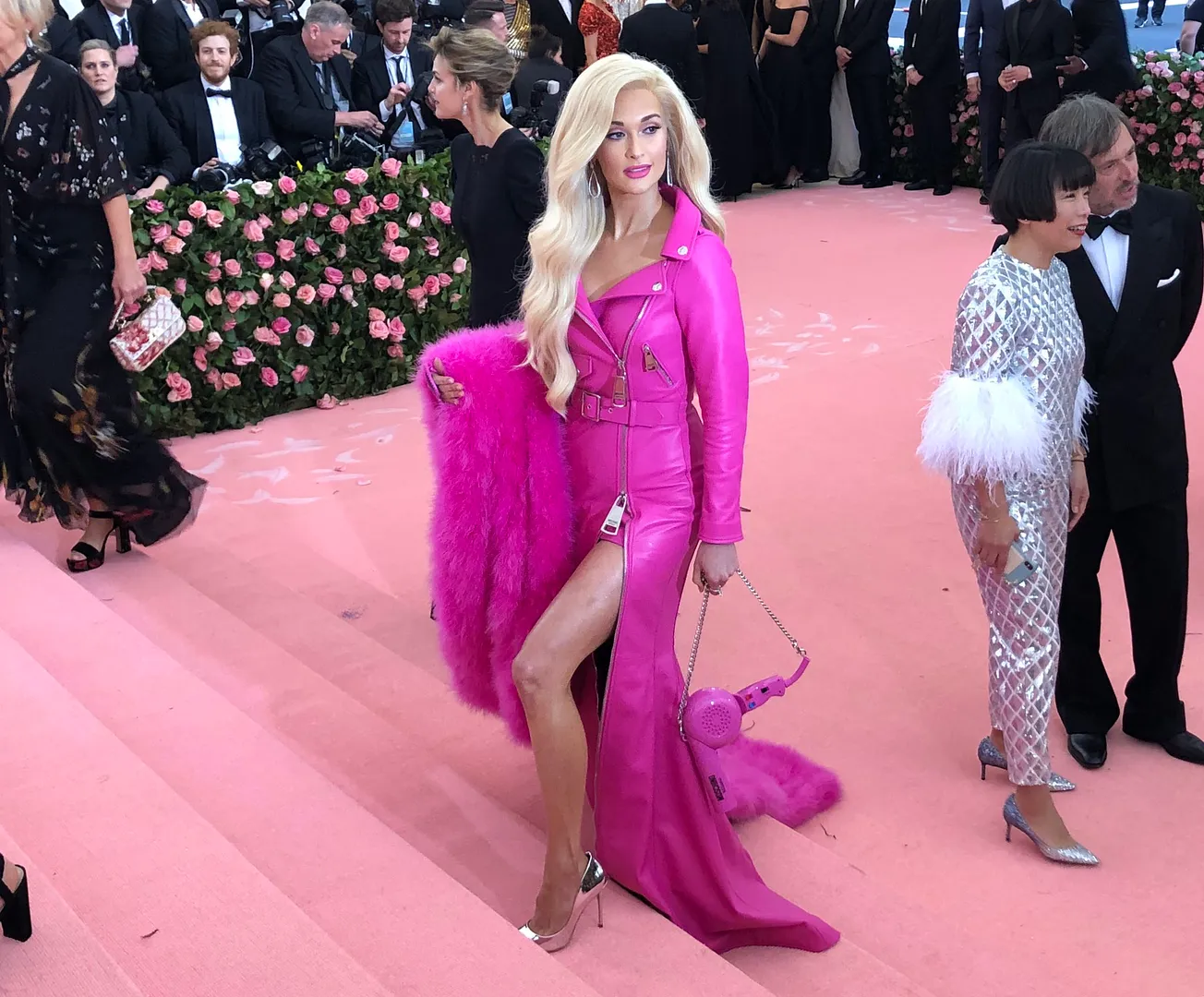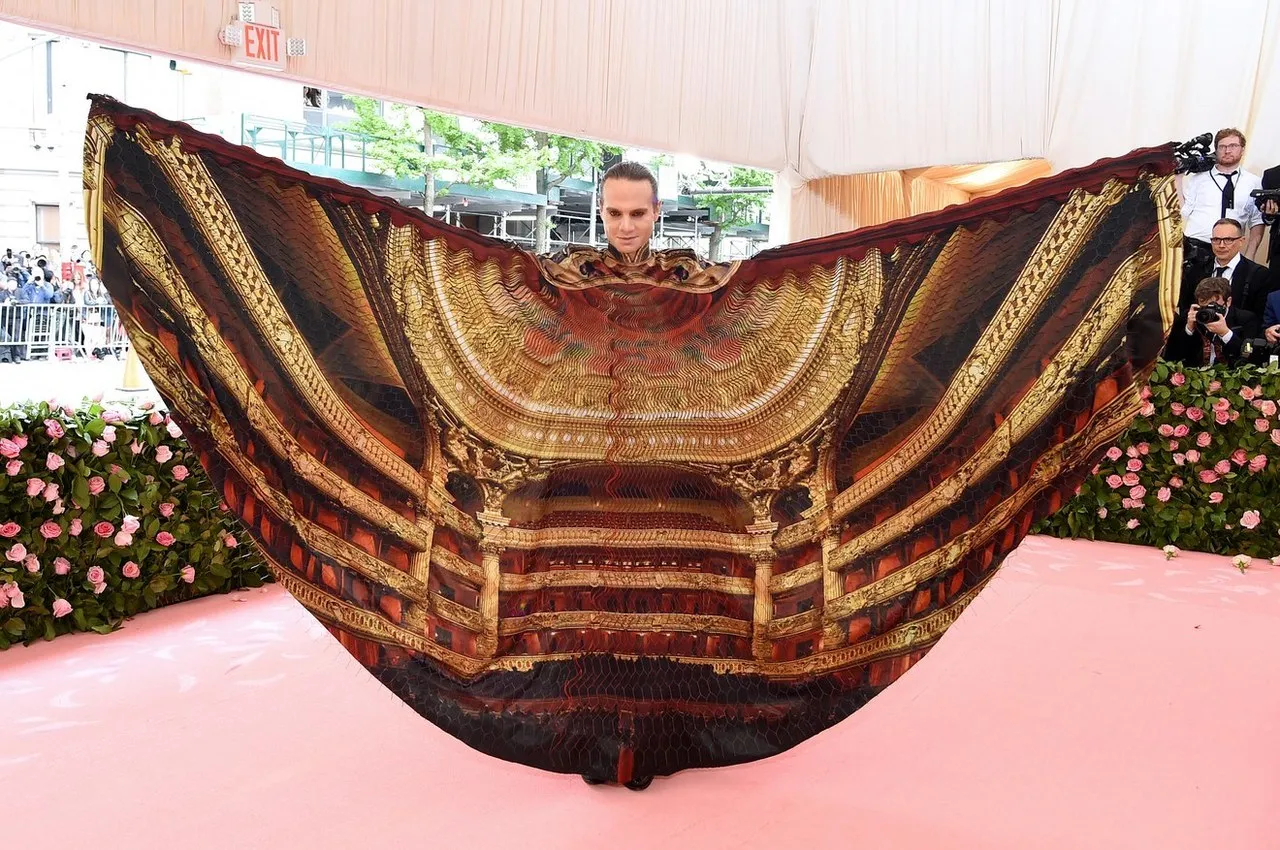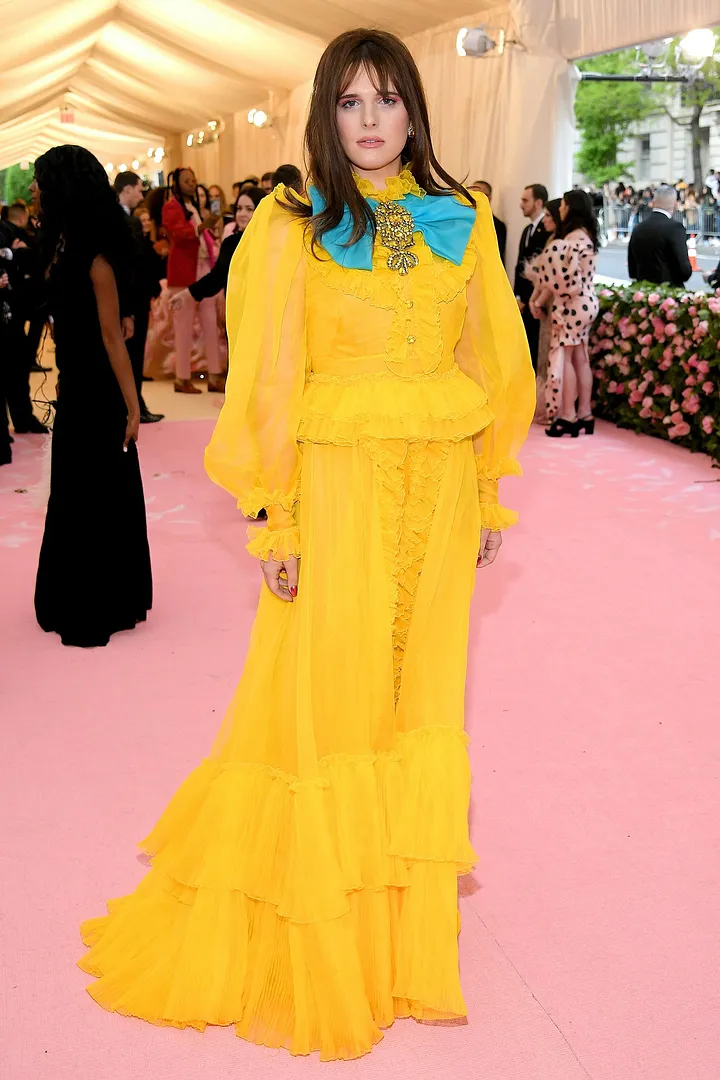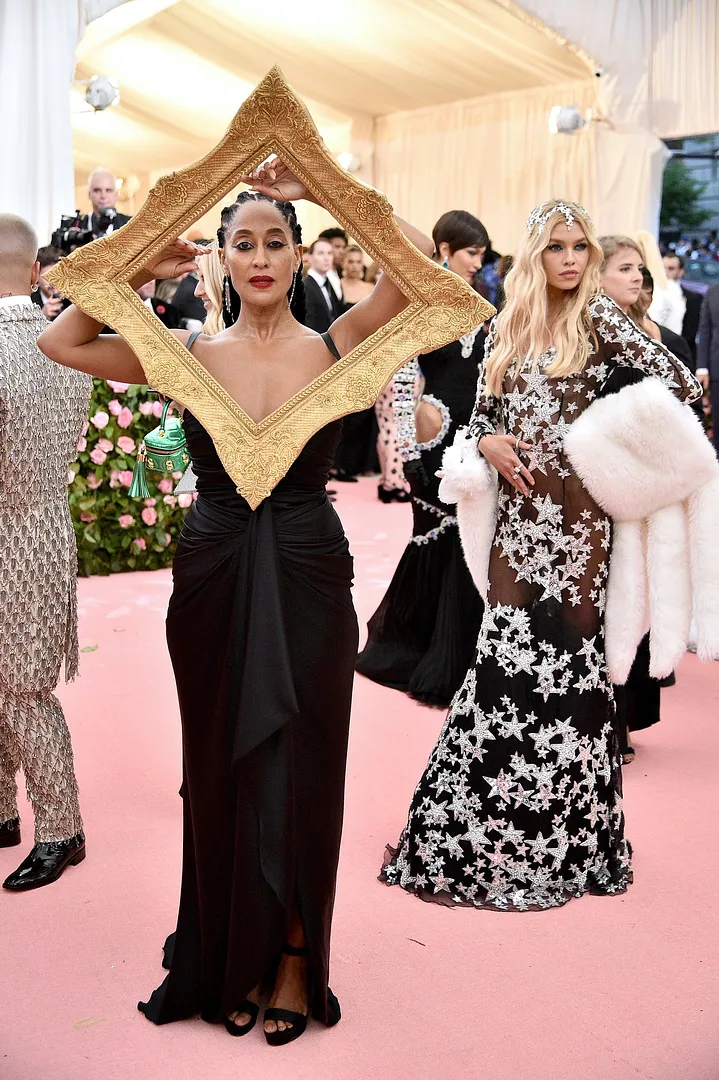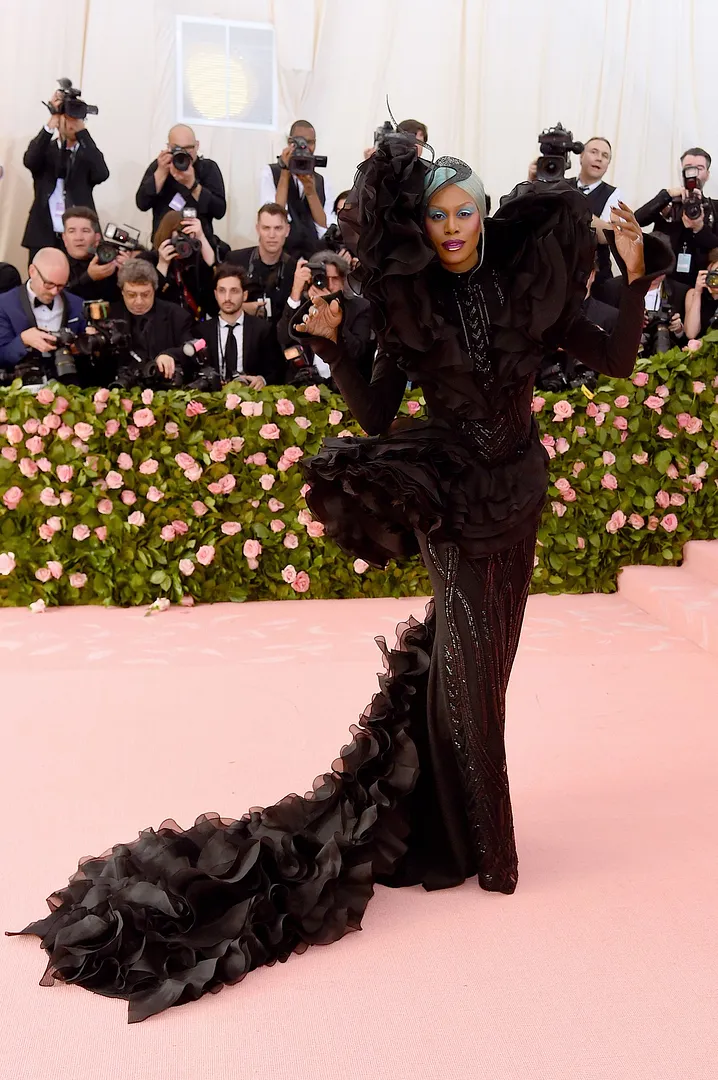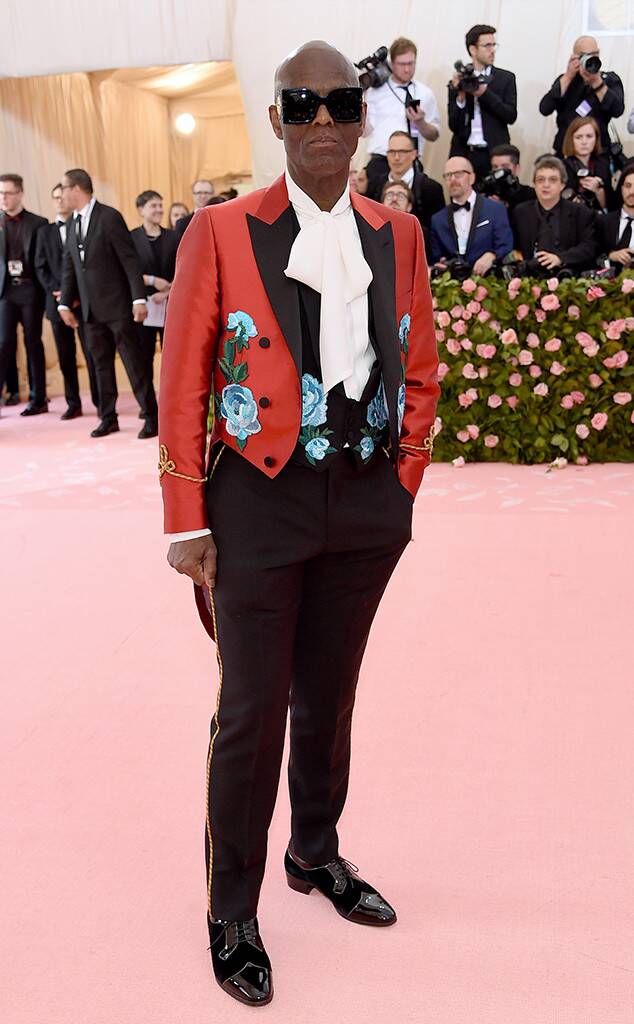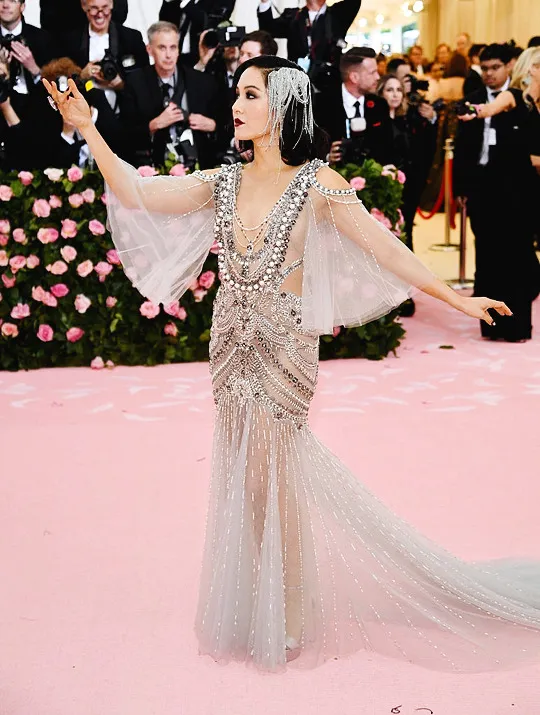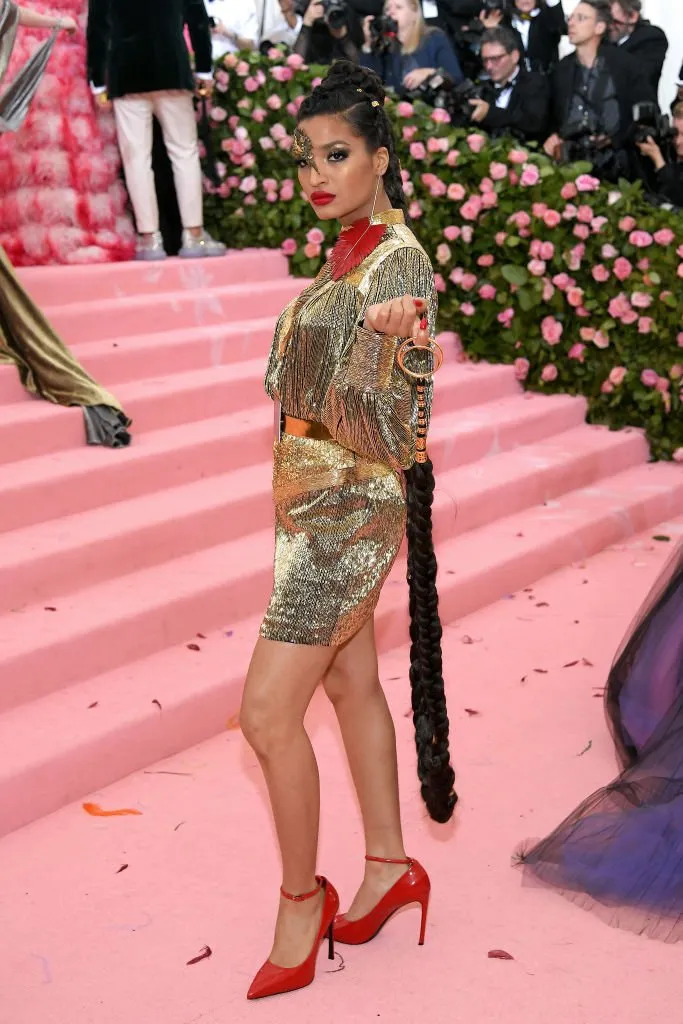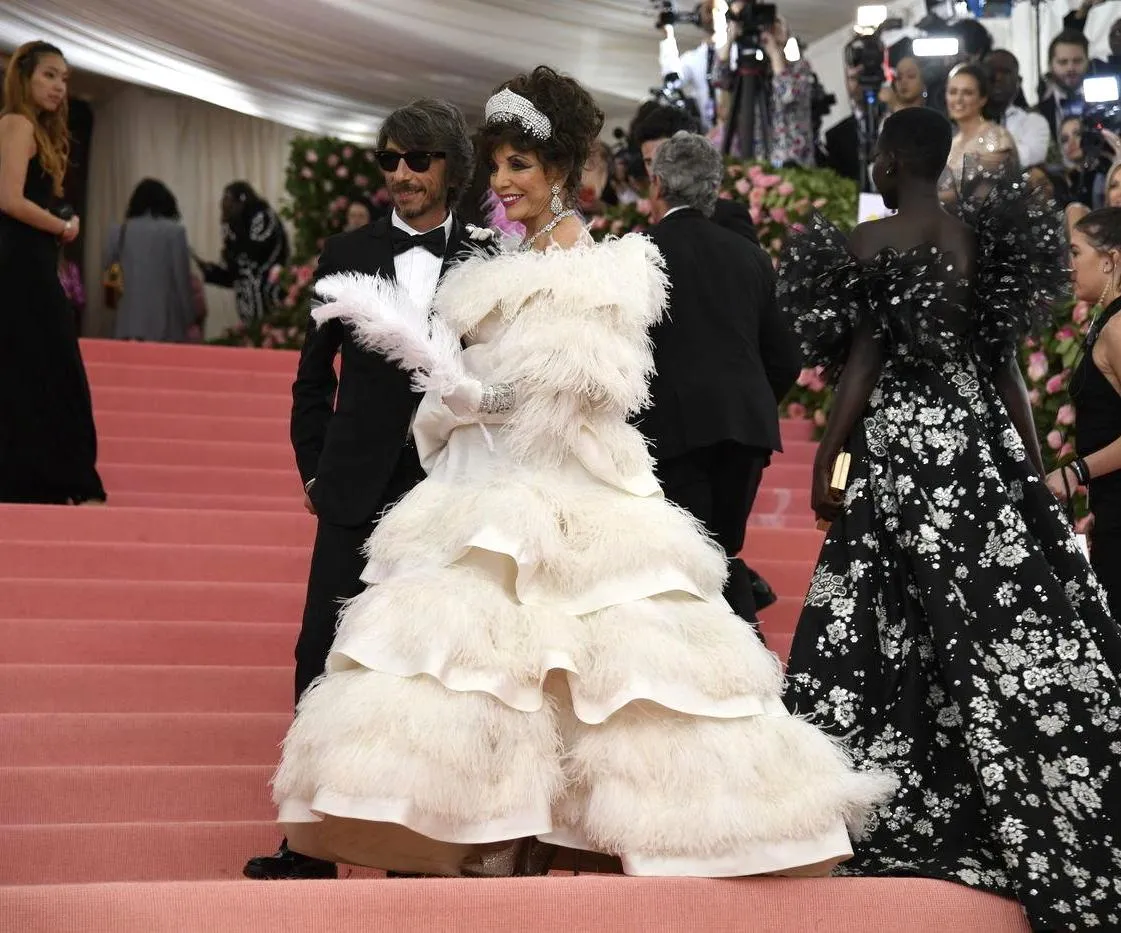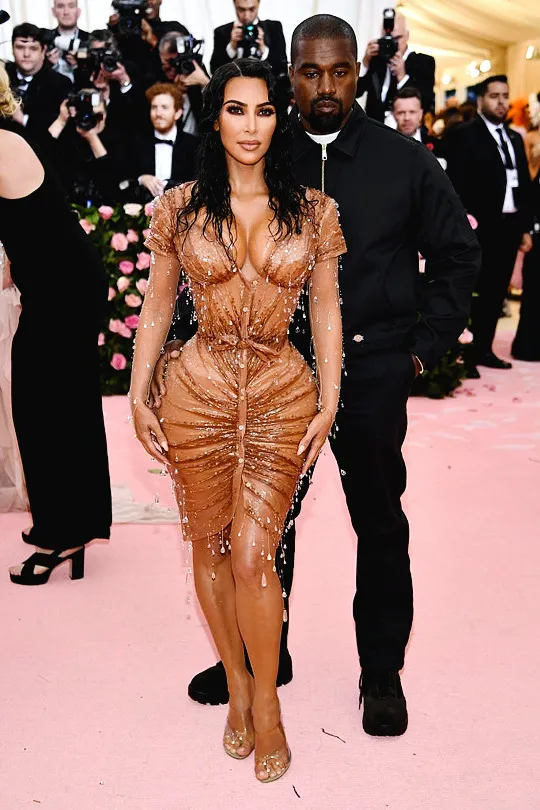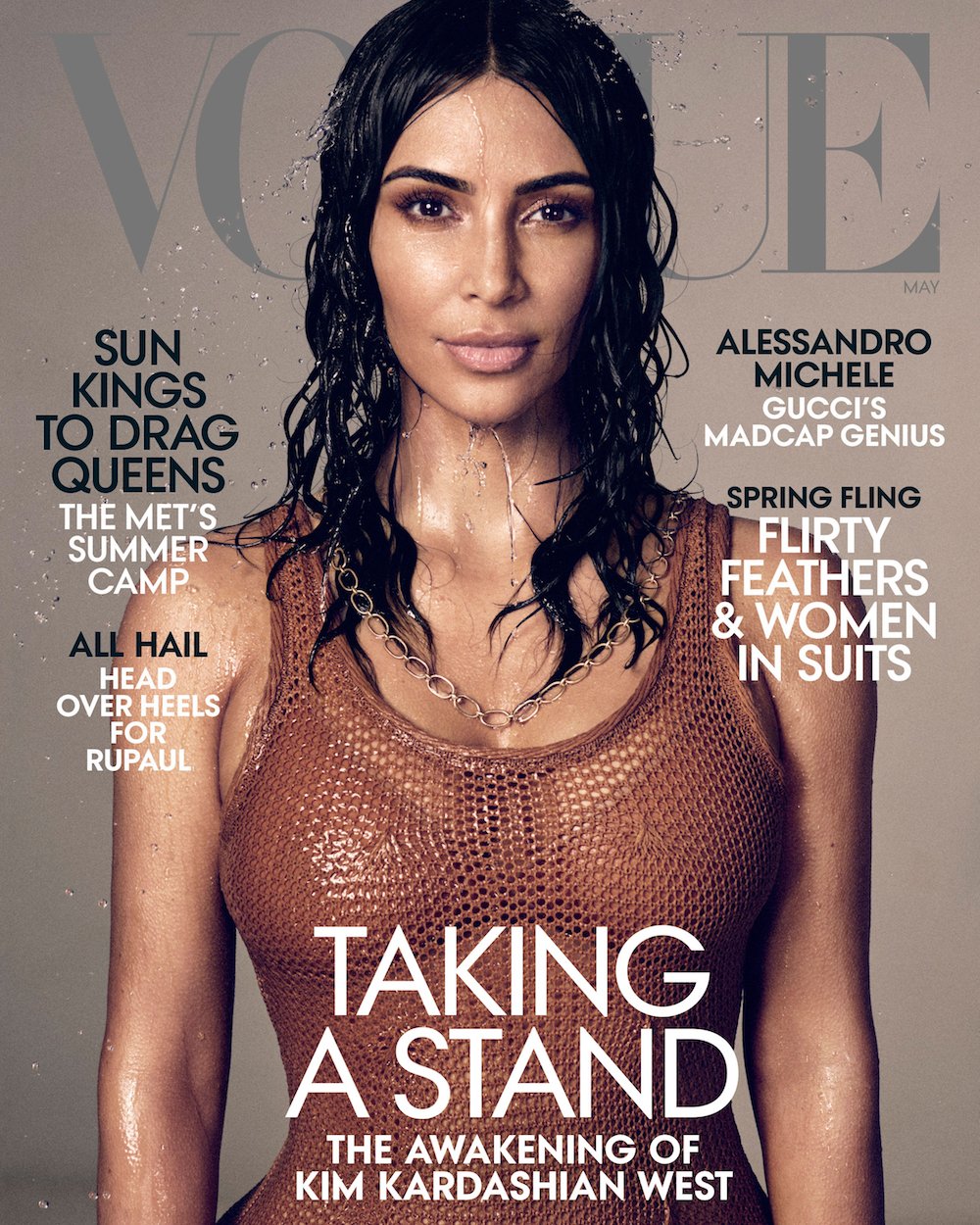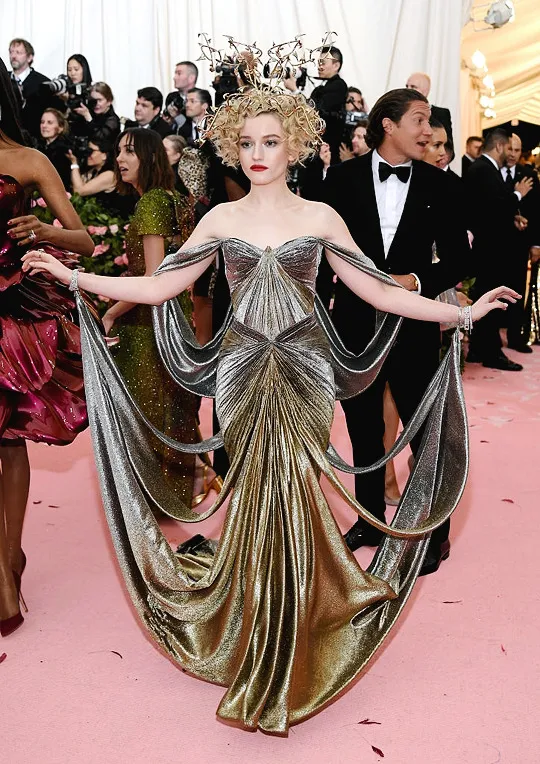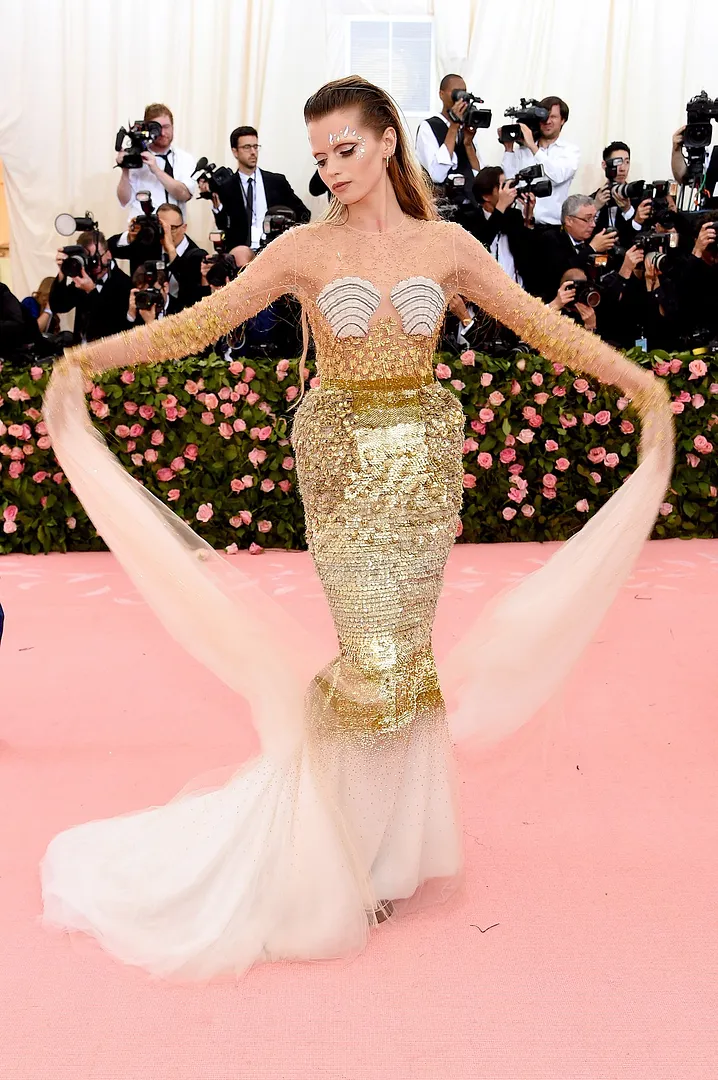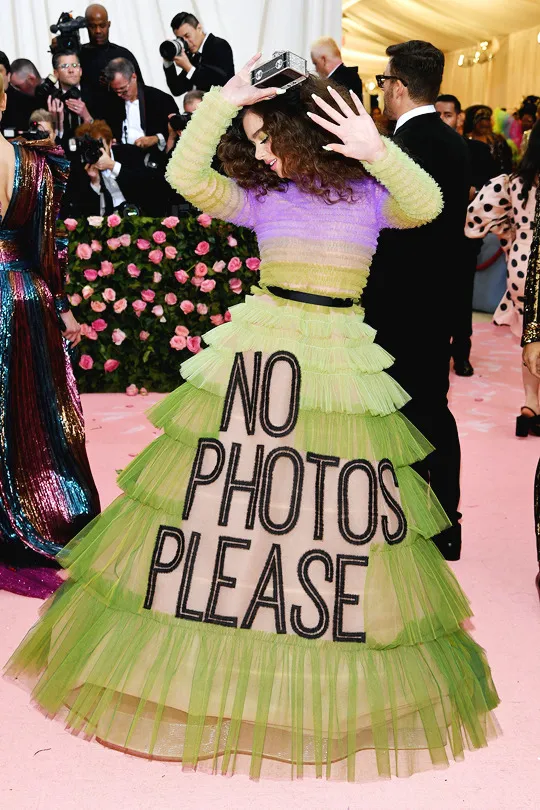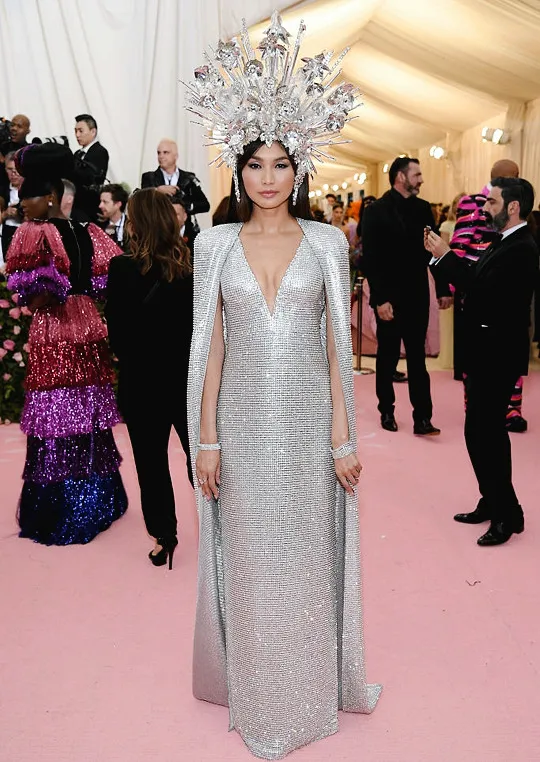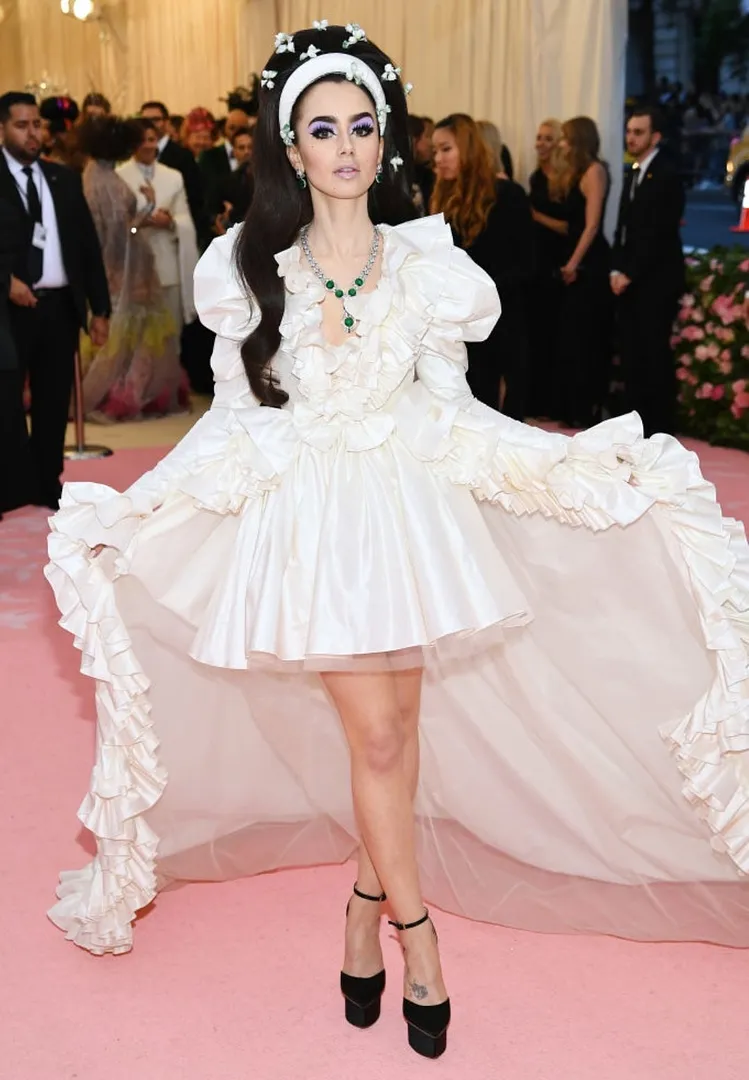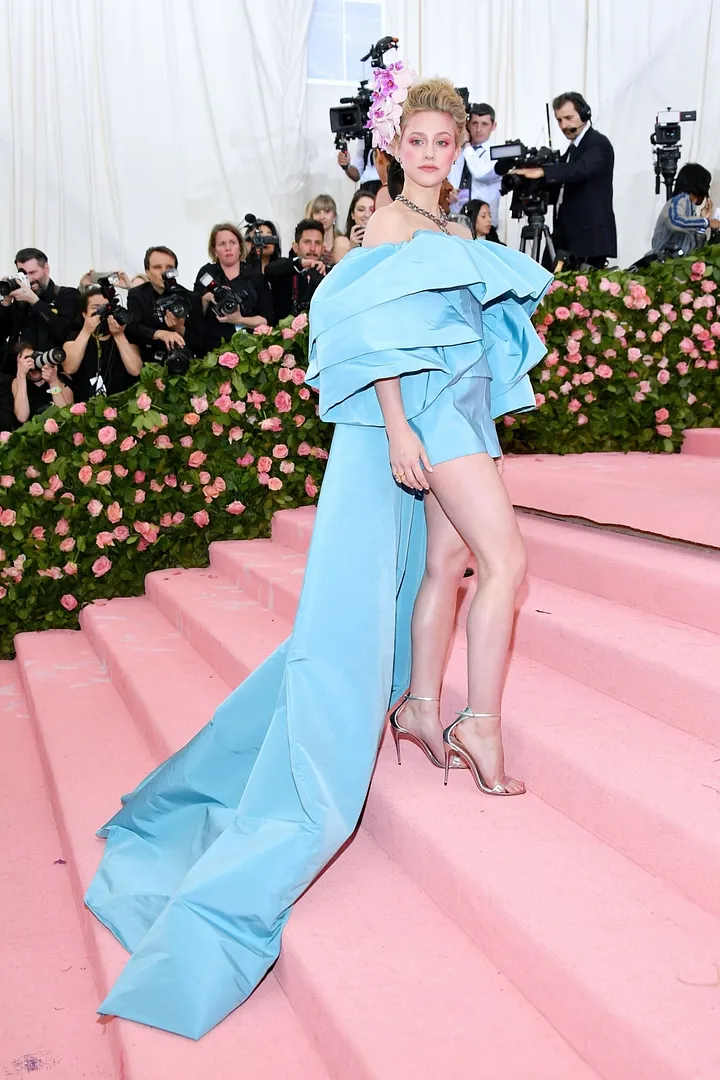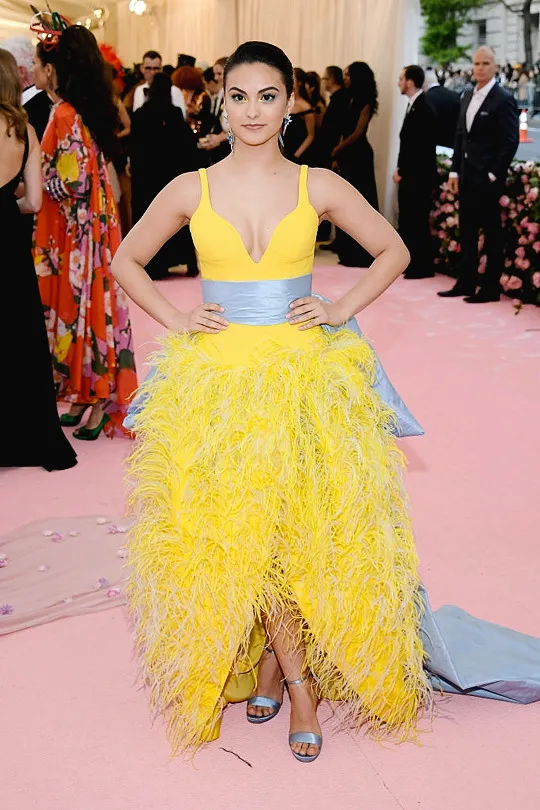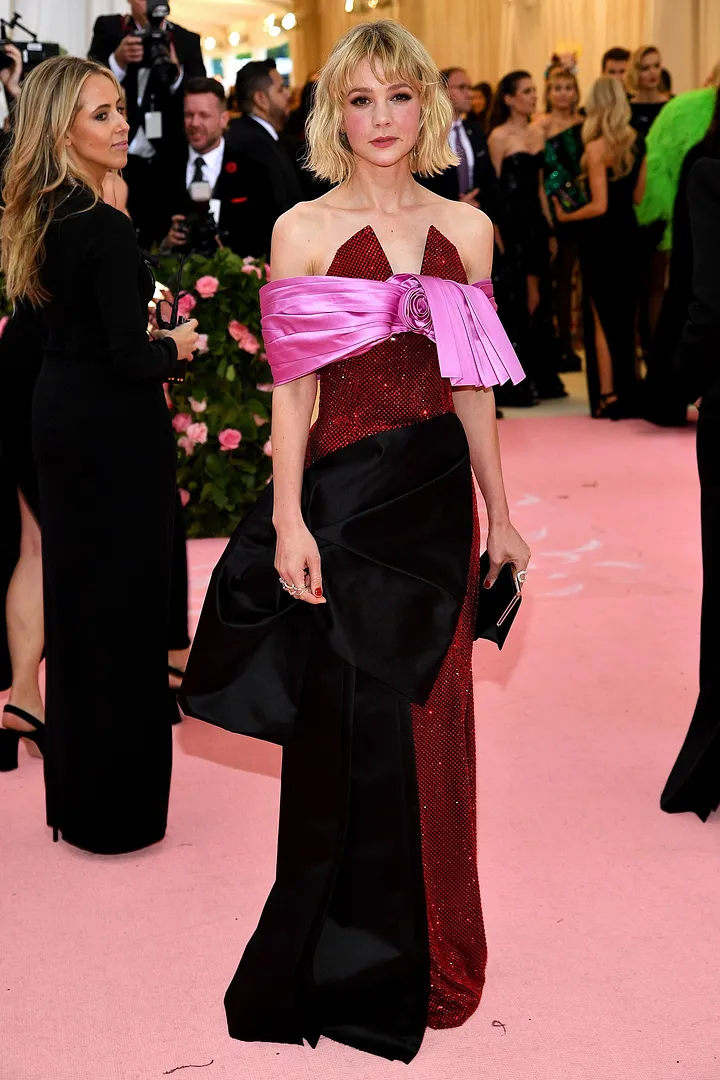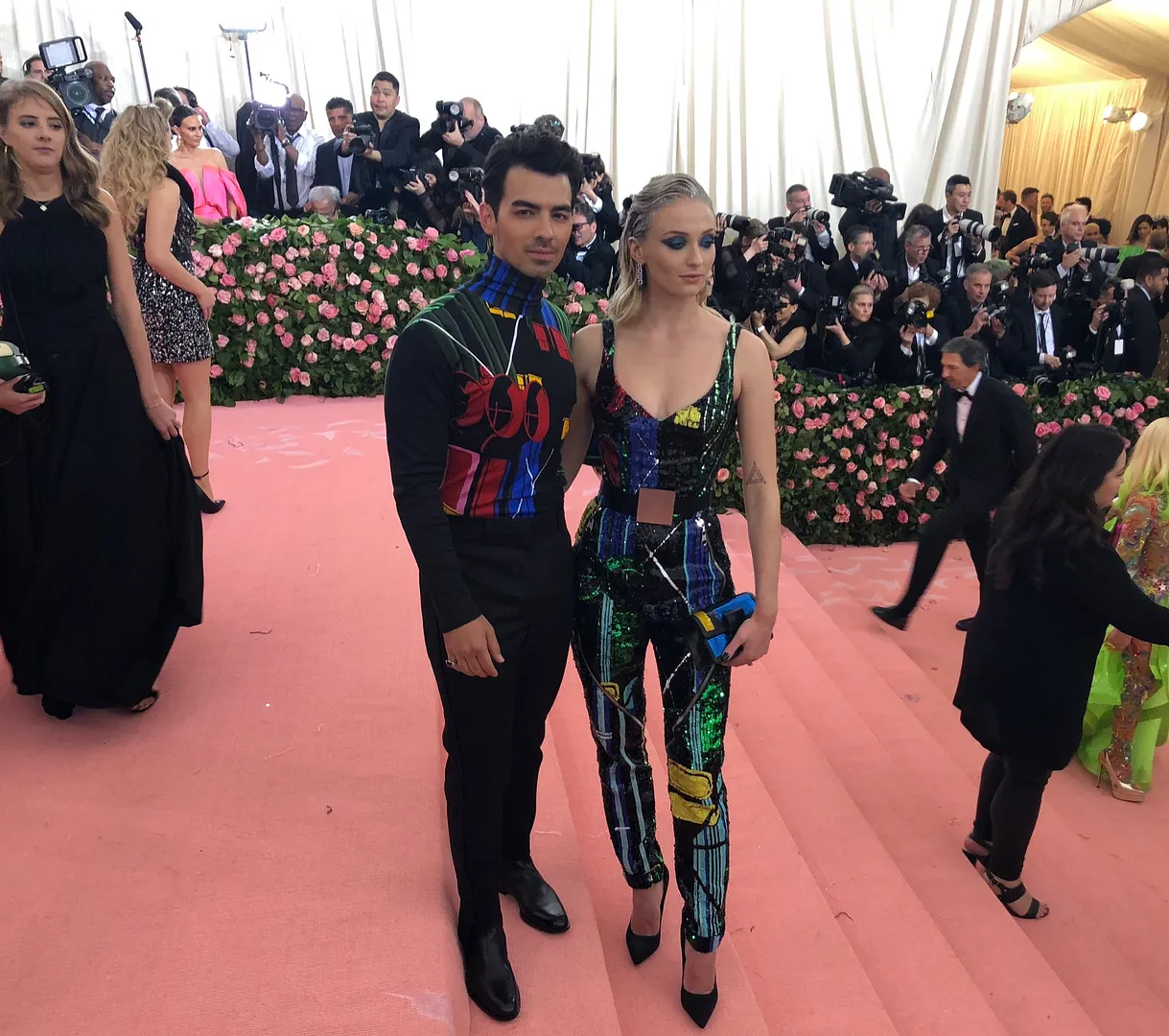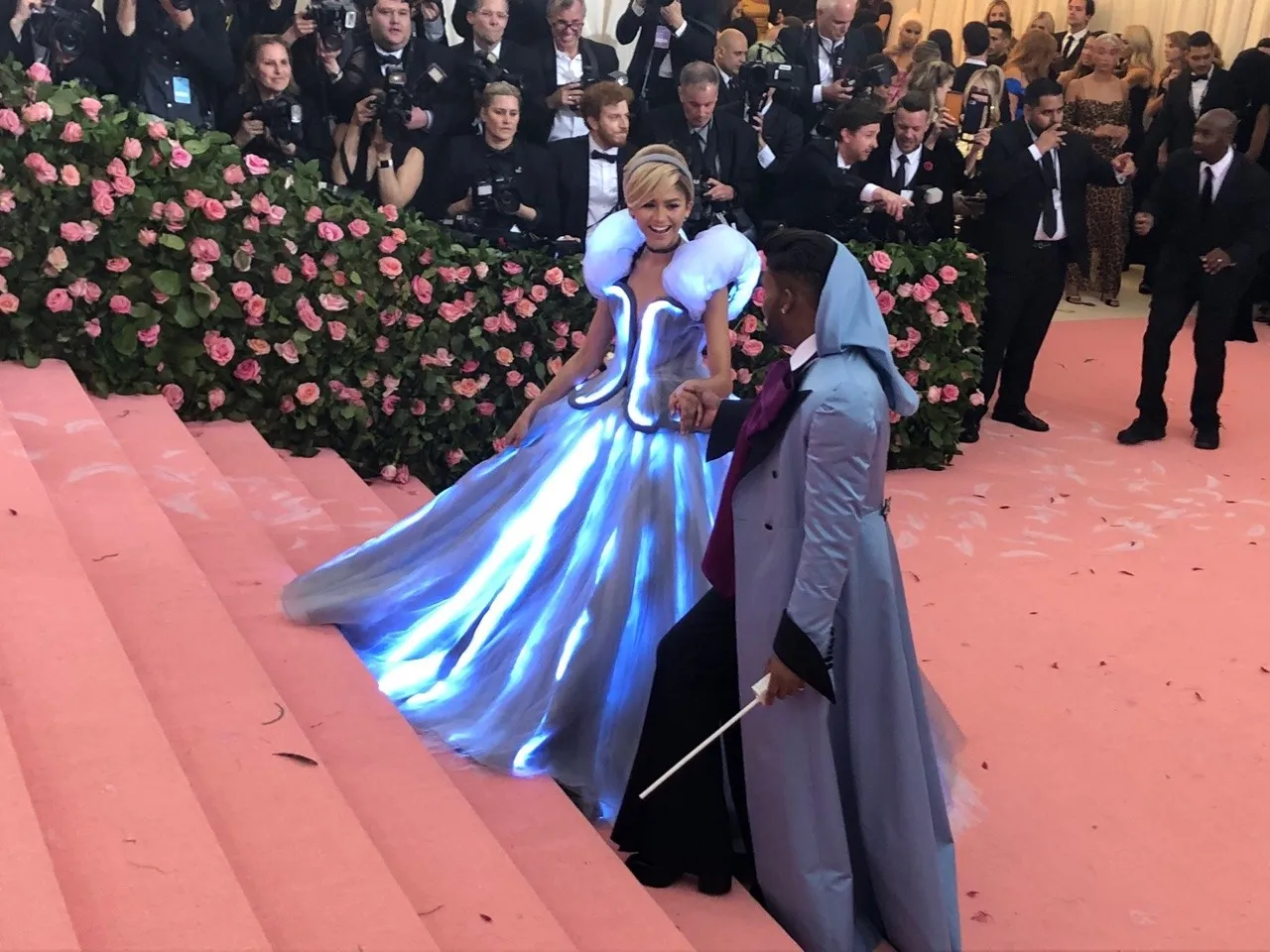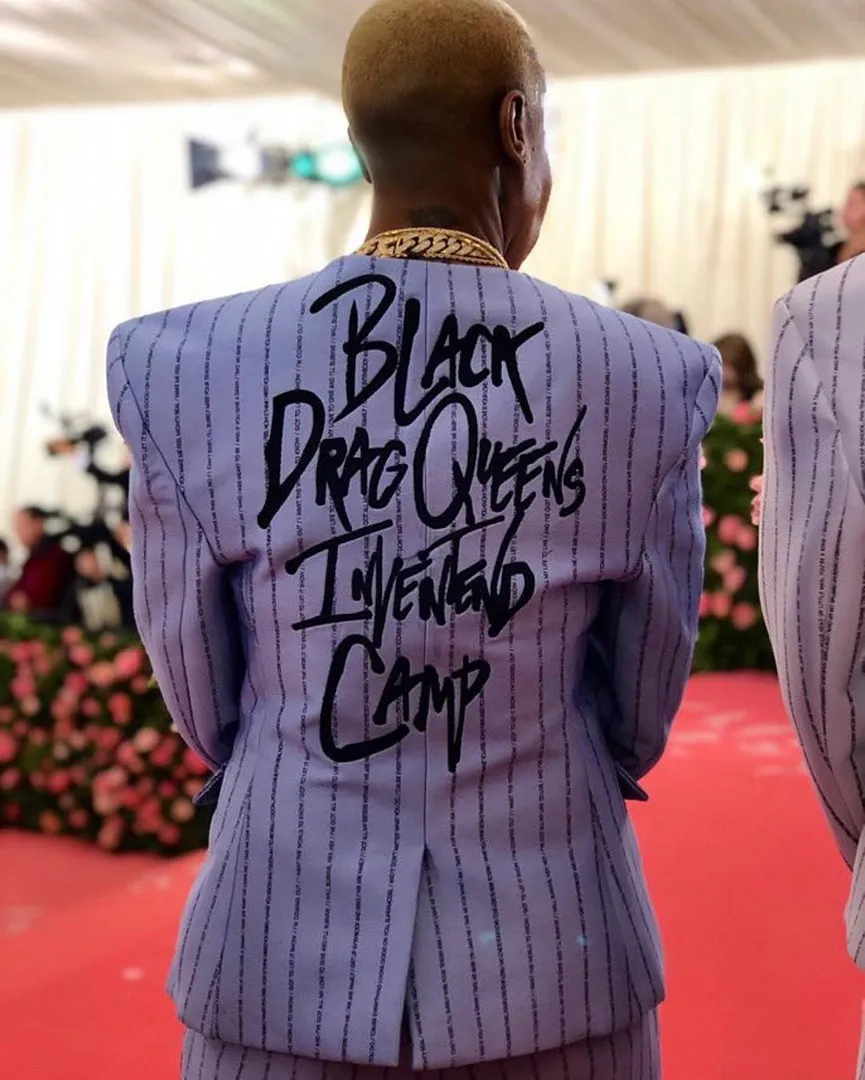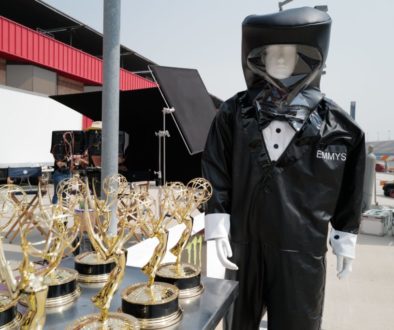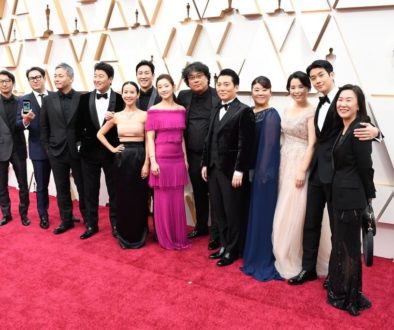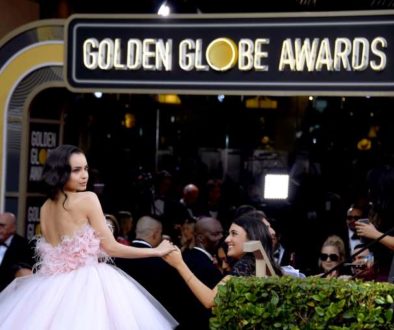Notes on “Camp: Notes on Fashion”
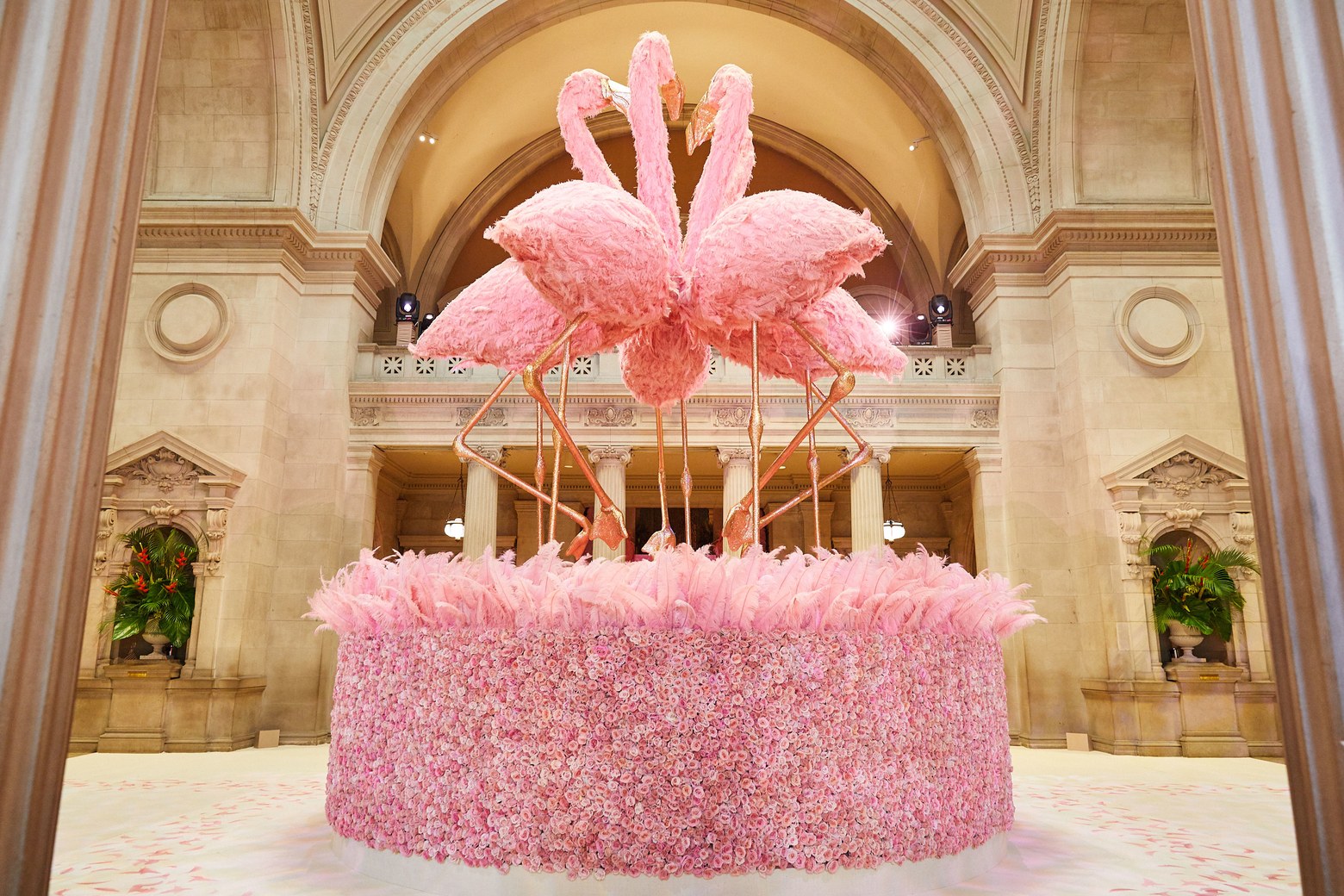
This post originally began with a 1500-word essay about camp, which I cut because literally who cares. Ninety percent of the attendees on last night’s carpet couldn’t be bothered to even read the Susan Sontag essay the entire exhibit was structured around, those who did tended to fall back on technical loopholes (“It has a lot of feathers! It counts, she said so!” “It says flapper style is camp, go, for the love of God, grab your showroom contact list and go!”), the decor was achingly tasteful and minimalist considering the brief, and the rest of the live commentary immediately devolved into debating whether things were camp enough or not on a subjective pass-fail rubric that doesn’t matter! (It especially didn’t matter if you were an E! commentator, apparently, since according to them everyone looked incredible and even before Harry Styles showed up on the carpet in haute control-top palazzos the commentators were breathlessly agreeing that he regularly blurs gender lines because – he wears pastels, maybe? They grade on a curve over at the E! studio.)
Why didn’t any of it matter? For one thing, at this point, pop culture is an unprecedentedly permeable membrane; we have unfathomable reference dictionary to hand, and everything references everything, and we talk about it with nested memes whose cultural shorthand reads like a linguistics thesis. We are primed to strip camp down to its component parts and reference them until language is nothing but callbacks to other things. We recognize camp on a continuum rather than at a fixed point, because culture develops in every direction at once; is it even possible to judge camp fully on a pass/fail rubric? If so, is failing at camp more camp than succeeding at camp? If camp was born from an embrace of low culture, reveling in the tacky, has it shifted now into an embrace of sincerity in an age of self-awareness, where in the middle of a primte-time drag-culture Renaissance the only true camp is regional beauty pageant contestants weeping from the depth of their feelings? Can we even be camp any more? Is camp the only thing left to us now?
(If you mentally filled in the caption missing from this photo, you made the whole last paragraph obsolete already, congrats.)
The other thing is, once you make camp a brief on the Met Gala red carpet, you make actual camp almost impossible. Camp manufactured to a brief by a group of stylists who had interviews ready to drop on Vogue.com as soon as their clients appeared on the carpet is not camp. It’s hilarious! But it isn’t camp and was never going to be.
This whole year was a trap.
“Camp: Notes on Fashion” claims Sontag’s essay as inspiration as if it’s a rubric, which is a remarkable conclusion to come to for anyone who’s actually read that essay! Trying to find a unified thesis in that essay is a fool’s errand, but that essay is very sure about a number of things, not least of which that you can’t achieve true camp without being willing to risk being laughed at. Being ugly. Being crude. Being absurd about something you love.
More and more, the red carpet at the Gala has gone from a group of fashion-industry insiders to an event so popular it has its own red carpet show. Even in the few years I’ve been recapping, there’s been a distinct shift in both the overall pressure to meet the brief, and the overall popularity of the red carpet to the sort of actor whose image is a living thing carefully tended by a team of trained professionals hired to prevent their clients from ever being the butt of the joke. (The 2011 red carpet, for the exhibit celebrating McQueen, looks positively dull compared to last year’s Catholic parade.)
I cannot overstate how serious this whole machine is. Page Six, breathlessly reporting how this year’s theme had freaked out celebrities, also confirmed something we all already knew but I always love to have in writing: “According to Constable, ‘Vogue and [publicity powerhouse] KCD dictate what time each star arrives, depending on their fashion cred.'”
And that’s if you actually get a dress everybody can live with.
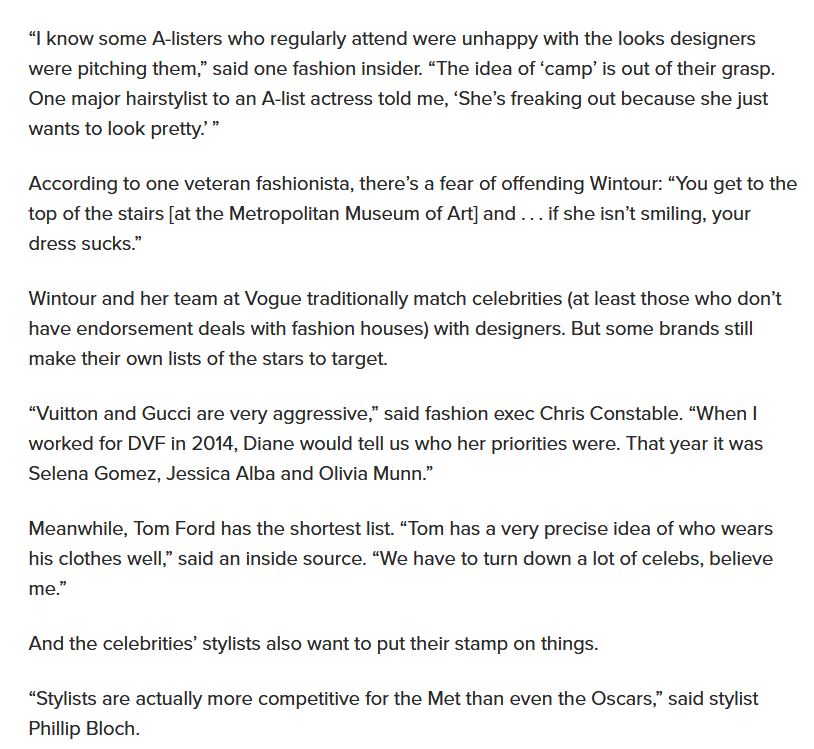
Now, it is entirely possible to be camp on this red carpet! This carpet loves camp! This carpet is just begging for everyone on it to throw caution to the wind, call up whatever couture their celebrity currency can afford, and wear something so deliciously impractical they can’t even sit down to eat! Rihanna is the highlight of the last several years because of her ability to go full camp with no regrets. I just do not think we were ever going to get a lot of organic camp on a carpet when everyone was ordered to camp the brief. (“What is extravagant in an inconsistent or an unpassionate way is not Camp. Neither can anything be Camp that does not seem to spring from an irrepressible, a virtually uncontrolled sensibility.”)
Even the décor, which is the result of months of painstaking back-and-forth about the smallest particulars, ended up looking brutally monochrome and tasteful; this is no more campy than any randomly-selected Instagrammer’s apartment where they’re sitting on their pale pink velvet sofa enthusing about finally finding the Perfect palm-leaf wallpaper that really spoke to them, you know?
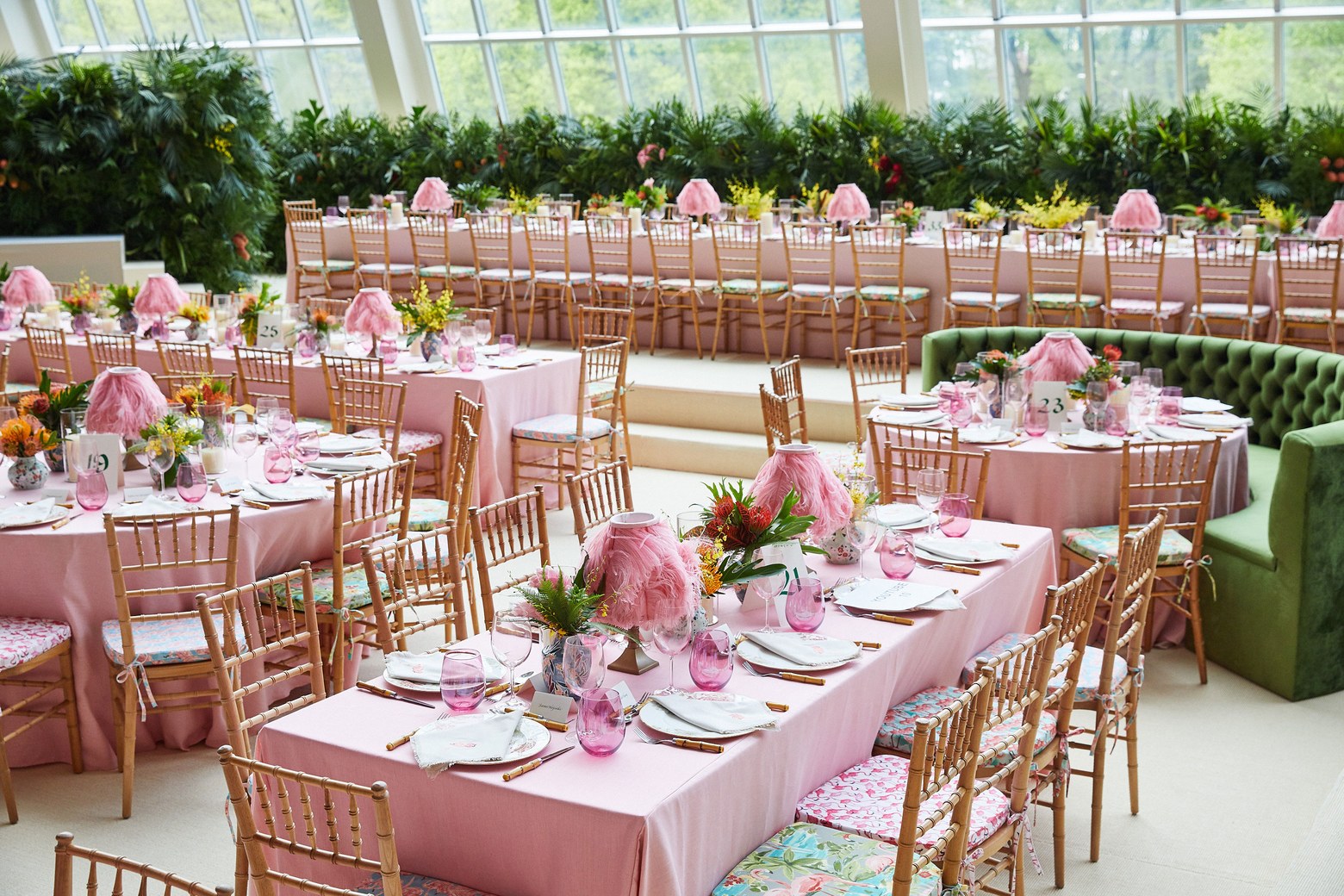
If the Met actually cared about camp as an aesthetic statement about the embrace of low culture and enthusiasm for the tacky and off-putting, those chair covers would have been carefully-sourced velvet paintings of people’s dogs, they would have made lamps from Barbies, and the tablecloths would have been some sort of Lisa Frank fever dream, or a screen print of stylists’ NDAs. There is not a single rose-gold disco ball on these tables because Anna Wintour thought it would be too much, and that is sort of all you need to know about how this evening was going to go.
(The article quotes the caterer’s dessert plans: “We developed a lovely Gianduja cake with a ‘male-female’ topper—male on one side, female on the other,” he said. “Bit of a double entendre.” What a fun, unstudied, sincerely campy time. Also, at least two attendees dressed in exactly this concept. Does that make them more or less camp? Does that make the cake toppers more or less camp?)
The Met carpet is, at this point, notorious for watching people with immense fashion resources do a safety fallback rather than committing to the theme. “Catholic” is awkward, but it’s also a fairly literal brief that has many interpretations available. “Camp” requires some amount of imagination – and, more difficult, asks for something that’s hard to manufacture. It is entirely possible that by demanding camp, the Met red carpet made real camp impossible. No matter what anyone on this red carpet did, they would not be as camp as Billy Porter has been on two regular red carpets this year, when camp was not expected. Not because his outfits were camp, since they were not – they were dramatic, but camp leans heavily on the embrace of bad taste and both his outfits were dramatic but pristinely done and, as many people on this Met carpet have not learned, pristinely dramatic and camp are not the same. But those outfits foregrounded the “theatricalization of experience” Sontag mentions in her essay as one of the bases of camp. Specifically, Porter’s outfits both mocked and exaggerated the traditional expectations of masculine fashion on the red carpet and the performativity of the red carpet as an ecosystem, fondly mocking their general risk-aversion; as Sontag says that camp “refuses both the harmonies of traditional seriousness and the risk of fully identifying with extreme states of feeling,” both Porter’s red-carpet outings would qualify – and more so because they were a sincere and (as much as the red carpet allows) a spontaneous expression. Fashion is wild.
It did feel like there were limits: despite more than one person dressing more to last year’s theme than this year’s (Florence in particular came in looking like one of the many-winged seraphim), you’ll notice that in the wake of the Costume Insitute’s cozy relationship with the Vatican, nobody on this carpet had any vulgar religious trappings; a whole carpet dedicated to the camp sensibility, and not a sexy nun in sight. In fact, more or less and to no one’s surprise, this red carpet mapped fairly neatly over “Punk: Chaos to Couture”: maintaining the brief required imagination, and it also meant risking looking foolish, or throwing off the expectations of tastemakers. Most of the people on this red carpet were never, ever going to risk that. This red carpet was some bold souls amid a sea of people hoping that a giant skirt in a bold color counted as camp. (Including Serena Williams, who was a co-chair and still didn’t risk anything more than a slightly-neon citrus on her beautifully embroidered and traditionally-fitted gown.)
And, to be honest, camp fashion is not my area of expertise. Its history is deeply rooted in a subculture I have not sufficiently studied to speak about with much authority, and taking it into the wider reaches of the fashion industry and calling on it again for this event means that once-homegrown expressions get quickly subsumed into The Machine and end up entangled with the same issues one runs into when Anna Wintour makes everybody try to interpret punk fashion as she wears a pink floral gown and laughs at them. (She fulfilled the brief this year, in a very literal way that points directly at one of Sontag’s concrete notes – “Camp is a woman walking around in a dress made of three million feathers” – and also echoes the flamingos on the floral centerpiece in the lobby. Is that more camp or less camp than ignoring the brief?)
I lose track of social media stuff almost immediately with things like this, so I am not able to track anything once we get into it, but the first few looks are always revealing. This year the canary in the coal mine was Caroline Trentini, who showed up early in the evening wearing this and got quite a bit of heat, as people scoffed that this “wasn’t Halloween” and she looked terrible. I thought that seeming out of place and vaguely tacky and not caring about the suitability of your over-the-top outfit was, in fact, fairly camp — even more so if you think about this dress as a reaction to something in particular about red carpet or Met Gala culture. If a model, with all the attendant beauty standards for a professional wearer of clothes, wears an oversized shirt with painstaking skeleton applique to fashion’s most self-congratulatory event of the year, is that camp? If not, why not?
The gymnastics of arguing individual elements of camp vs. simply being over the top in a regular-Met-gala way, and whether or not they succeed in the goal of being camp – if camp is even the goal – hits me right in the overthinking-things cortex in a way I wasn’t expecting and did not enjoy. Watching this red carpet was four hours of a vague sinking feeling. (“Thus, things are campy, not when they become old – but when we become less involved in them, and can enjoy, instead of be frustrated by, the failure of the attempt.”)
Here’s Saoirse Ronan:
In any other year (including the year “China: Through the Looking Glass” was the theme), despite being a lovely garment on its own merits, this would be something of a questionable choice for her, for Those Are Some Terribly Asian Dragons You Have There reasons. But camp is supposed to contain some element of bad taste, so by that measure this dress is wildly successful. But her hair and makeup don’t fully commit to the bad taste her dress has committed to, so has she failed because she isn’t ENOUGH in bad taste? Has she failed because this garment doesn’t hold sufficient understanding of good taste underneath its bad-taste veneer? Is it actually deeply successful camp because it is a reaction to a theme four years gone and thus deconstructing the cultural disaster of that carpet and, by extension, the camp of this red carpet itself? Is this a dress without a reason, unaware of what it’s meant to be commenting on, rendering it a failure of camp and thus merely tiresome? Or, in its tiresome, empty glitz, does it reach true camp?
Now imagine that process for 94 garments as I winnowed them down and you’ll know what my evening was like. It’s how I am with everything, all the time, so it’s not this post’s fault specifically. I do this when I debate sending a letter via certified mail. This post asks more questions about camp (or Camp, but we all know which version I mean) than it answers, because I literally cannot help it.
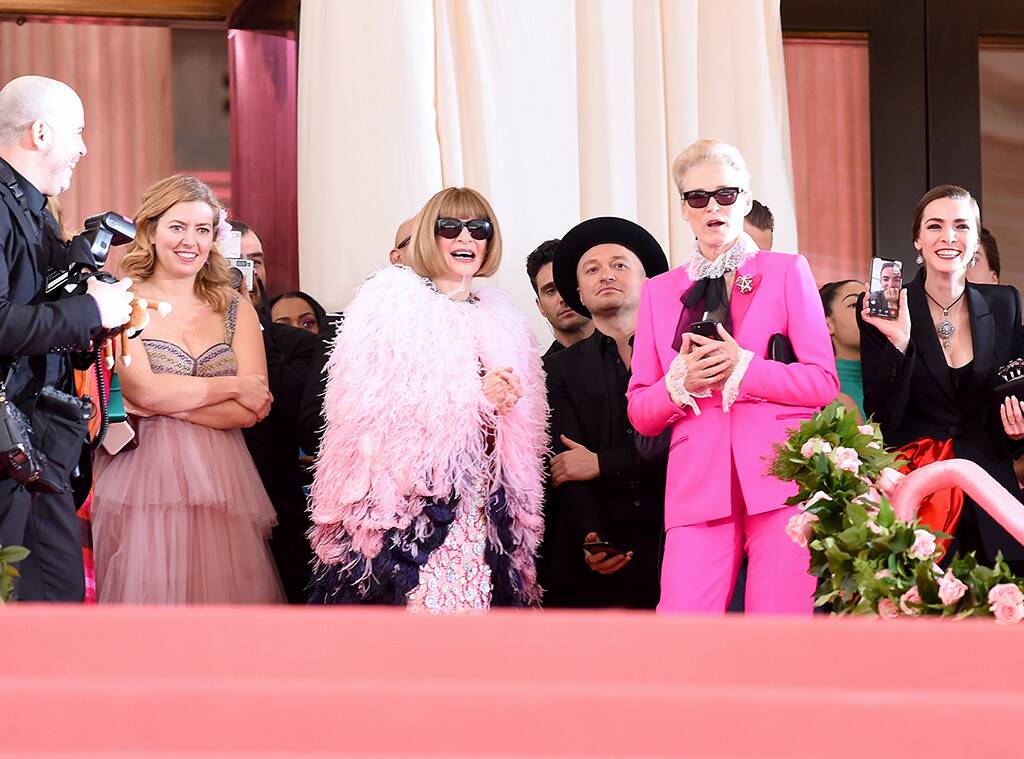
Are Fall of Rome vibes camp? We’ve got those!
And Billy Porter. We always have Billy Porter.
Full Camp. No question about it. Thank you, Billy Porter, for one glittering moment of peace.
Lady Gaga. Also fairly inarguably camp? I mean, part of me is arguing, if only because she has gone more camp than this before, in places where that was less expected than here where she is a co-chair of the entire event, and camp in that way that’s fearless and slightly off-putting – the meat dress, the giant egg – versus a way that’s like a deleted sequence from the “Think Pink” musical number in Funny Face, which is also camp, for certain values of camp! Just, not the same values of camp across the board. Is either version of Gaga camp supposed to seem more authentic for someone whose entire existence is performance art? And what level of performance art puts her life perpetually in the camp bracket? During her actress tour the last couple of years she has adopted a slightly arch aesthetic that hovers comfortably at A Lot of Dress but never quite tips over into camp in a way that might look like she’s sartorially rejecting the awards she’s up for. Was that period of careful good taste actually the period of bad taste? Is this performance a reference to that period, which featured several dresses not unlike her black dress here, as she consciously peels it away to her Telephone-music-video lingerie and teetery boots? If it is, is referencing the past camp self directly more camp or less camp than referencing something external to one’s own past?
Luckily for my bruxism, quite a few guests managed to hit the brief with no problems, in ways that seem self-evidently camp and require no further discussion.
Janelle Monae. (“The whole point of Camp is to dethrone the serious. Camp is playful, anti-serious.”)
Ezra Miller. (“It’s too much,” “It’s too fantastic,” “It’s not to be believed,” are standard phrases of Camp enthusiasm.”)
Lizzo, whose look is a neon ode to The Slipper and the Rose, which makes this firmly and delightfully camp.
Lupita Nyong’o. An excess, a commentary, a joy. Camp.
Cardi B. If this isn’t camp, what is it.
Celine Dion. Truly this one was a treasure; Celine Dion doesn’t give one shit about the line between irony and sincerity, and she will wear this on the Met Gala carpet to both honor and make fun of her own Vegas show without a care in the world, because life is too short to worry about it when you are Celine Dion.
Diane von Furstenberg, saving me the trouble of wondering about the boundaries of self-reflection as camp vs. self-reflection as necessary modern branding by wearing her own Warhol portrait as part of a Statue of Liberty Costume so I don’t even have to worry about it.
Violet Chachki, whose dress is a giant opera glove. Camp.
Elle Fanning, I Dream of Teenie. Camp.
Hamish Bowles. Of course.
Rupaul. Playful, literal, a little ridiculous. Camp.
Keiynan Lonsdale. Artifice and excess expressed with joy. Camp.
Kacey Musgraves. Literally Barbie. Camp.
Jordan Roth. My favorite thing about this opera-house cape is that Ryan Murphy wore a gigantic peach pearl-and-bead cape, looking like somebody who jumped out of the unsuspecting crowd to volunteer to lead the Coney Island Mermaid Parade at the last second (which echoes his general relationship to camp in some ways), and even as he gave his interviews on the way up the stairs, desperately trying to look comfortable in a cloak that he visibly regretted, Jordan Roth was already on camera behind him, a gigantic and delighted Opera House bat, gliding ever closer.
Hari Nef; a semi-traditional silhouette slightly exaggerated for effect, emphasis on a playful aesthetic, with theatricality as a concern but looking good as the ultimate goal. Camp?
Tracee Ellis Ross. She is so good at carrying off looks that would utterly swamp anyone else. That said, hours after I saw this, I am torn as to whether she thinks this is camp because it literalizes the theatricality of being looked at, because it literalizes the cultural experience of the museum as an edifice turned party venue, or because she’s mocking all the first-year art students that do some variation of this in an attempt to convey that the entire world is performance art and thus, fundamentally, existence is camp. If she is, is that more camp or less camp? Does this gesture elevate her whole look – which feints at being Madame X but not conclusively – enough into costume for it to be camp?
Laverne Cox. She looks extremely cool and this look is certainly dramatic, with some exaggerated proportions that I declared camp on other outfits already so presumably they’d be camp here. But it’s also a foolproof color, and the makeup is editorial but very carefully chosen and hardly Too Much, given that this is the Met Gala. It’s a great look. Is it camp? On this carpet, this time?
Dapper Dan. As a designer he has a long history of embracing and reinterpreting camp amid ever-shifting pop culture sands; I wouldn’t say this outfit is camp in itself, but it’s a lovely outfit on someone who understands camp, so, it counts?
Constance Wu. This is camp on a technicality (“Random examples of items which are part of the canon of Camp: …women’s clothes of the twenties (feather boas, fringed and beaded dresses, etc.)”), and the commitment to all aspects of the flapper aesthetic without trying to hold anything back as “modern” to keep the look from going costumey is a point in its favor campwise, presumably. But this feels, at heart, like a look her team knew was a technicality, and their primary goal was to make her look incredible in period clothes in case anyone was looking to cast anyone in a period piece. (And I would! Look at her!) I don’t think that’s camp; I don’t think her team cares.
Indya Moore. I think her style on red carpets is quickly becoming recognizable – a glitzy club-kid insouciance with an emphasis on leg – but is a gold dress, a little face glitz, and a long braid enough to be camp on this red carpet? (Again, on a normal event carpet, it would almost certainly be at least a little camp, but there’s a brief at stake here.) She and Tessa Thompson both had an excessively-long ponytail as their signature this year. Is that single stroke of artifice and performative femininity a strong enough camp marker to bring the look over the line wholesale?
Joan Collins. When an icon of camp shows up in campy cosplay of her past self, in a time when her aesthetic was not yet self-aware enough to contain the nostalgia/aesthetic distance that Sontag says is one of the touchstones of camp, is that more camp or less camp than wearing something less overtly campy but more arguably tasteless would have been?
Kim Kardashian, who dressed up as her own Vogue cover. Is that level of self-reference cynical? Camp? Both? If this was planned in advance with Vogue – and there is no reason to think it wasn’t – is that in itself an element of camp, from sheer artifice and theatricality? Is it an oblivious signal of late-capitalist synergy where every person is a brand? Is it a self-aware ouroboros where camp is the last bastion of performative enjoyment against the overwhelming despair of cultural collapse into late-stage capitalism?
Julia Garner. Sontag talks a lot about the empty-glamour vessel – flapper aesthetics and Greta Garbo in particular – wherein an excess of chic trappings without a sufficient balance of feeling (component parts to be determined) will eventually sink gently into camp. For purposes of the essay, sincerity, joy, self-awareness, blankness, and obliviousness all qualify as camp by turns, which is quite a swatch card to pull from. There’s some of all of that here, though – a hold-still glamour so self-aware that no camp will stick to it. Does that make this camp more successful or less successful?
Abbey Lee Kershaw, echoing this particular brand of camp with sharp-edged scales and full-nonsense sleeves on a Coney Island Mermaid Parade special. Is this camp or merely fun? How much more mermaid was necessary to make this unequivocally camp?
Hailee Steinfeld. The internet and the fashion industry have individually informed me this is camp. I also think Hailey Steinfeld’s pose is doing a lot of work.
Gemma Chan. This is interesting. This is nothing new for the Met carpet – many a guest has cheated an easier-to-wear dress by throwing a fancy headpiece on top and knowing they can ditch it after cocktails. However, this space-empress headdress is a bigger commitment than we usually see on anyone short of Sarah Jessica Parker (who, fascinatingly, did not attend this year). If space-empress is inherently a camp aesthetic – and I would argue that it is, or we as a nation saw Flash Gordon for nothing – does that make this dress inherently camp? Does the prevalence of this particular aesthetic on the Met carpet in particular render the otherwise-camp elements uncamped? Gemma Chan ditched an awards-season rota of much more exaggerated proportions than this; has it been worth it?
Lily Collins. Is it camp to go as Priscilla Presley when Lana Del Rey has recently also adopted the Priscilla Presley aesthetic, and in a way more dedicated and overtly earnest even in her louche detachment than Lily Collins could ever manage to convey in a single barrage of flashbulbs? I’m asking. She fits all the aesthetic criteria; it’s a matter of degrees.
Lili Reinhart. This is just barely campish, but only in terms of other red carpets, not the Met carpet, which has seen this silhouette a dozen times. And honestly, she doesn’t care. She’s a spokeswoman for several brands which need her to not stick her foot in it, and everybody on her team opted for a slightly Marie Antoinette shape that wasn’t going to actually interfere with her youthful skin (Dermalogica!) and her youthful dress (Ferragamo!). For me, the most interesting and satisfying thing about her look was that last year she was sharing a train-arranger with several other H&M carpet-walkers, and I mentioned that it was the last year we’d see her without a dedicated train-arranger all for herself, and I was right.
Camila Mendes. Camila Mendes figured if feathers were good enough for Anna Wintour, they were good enough for her, and she was not going to risk anything else going over the top. This is her first year at the Met Gala. She’s playing a long game here, and camp has nothing to do with any of it.
Carey Mulligan is obviously not camp, because Sontag says that “Camp and tragedy are antitheses.” Special attention to the woman to her left.
Sophie Turner, Joe Jonas, and the woman to their left. (This look is not camp, and it is not intended to be. This is a reminder, if you missed the photos, that they are married now; they are a single unit now, you see, and Sophie Turner’s going to make the First-Marriage mistake and take his name and come to regret it, because they are THAT much a single unit now, because of marriage, which they had.)
Zendaya, former Disney star (and, thanks to recent acquisition of the Marvel studios, current Disney star!), being the first person on this entire carpet to reference Disney whatsoever, at hour four, with one of the last garments of the night. The Cinderella effect is blatantly borrowed from the Zac Posen light-up dress for Claire Danes the year they did “Manus x Machina”, but it loses nothing on its second go-round as a technique. Does this Cinderella experience in fact gain something from referencing a previous Met gown, and thus commenting joyfully on the self-seriousness of the Met Gala carpet in particular? The theatricality of the transformation itself is certainly campy, if not camp proper. The “accidental” loss of a shoe adds all the spontaneous/artifice tension one could hope for. Is the commentary on Disney princesses more camp or less camp for its deep faithfulness to the original with no hint of commentary on the Cinderella experience in itself? Where does race enter into the inevitable commentary on Disney princesses as generally white? Is this framing of Zendaya as a Disney princess more camp or less camp given that, according to the interview with her styling team, she intends this dress as a symbolic farewell to the company before her first “edgy” role that almost certainly means sex and/or drug use? And if it’s more camp, is camp commentary on something that has yet to exist still camp, or is that just the effect of meme culture flattening all time to a single point?
And last but certainly not least, Lena Waithe, being correct. (This is here because it is much more concerned with being punk than camp – it’s a shame-the-devil garment at a very self-congratulatory event, and if that’s not punk than what is? – and there’s no better way to end a camp red carpet than by going entirely off brief into another genre altogether. Maybe Lena Waithe was the most camp after all.)


